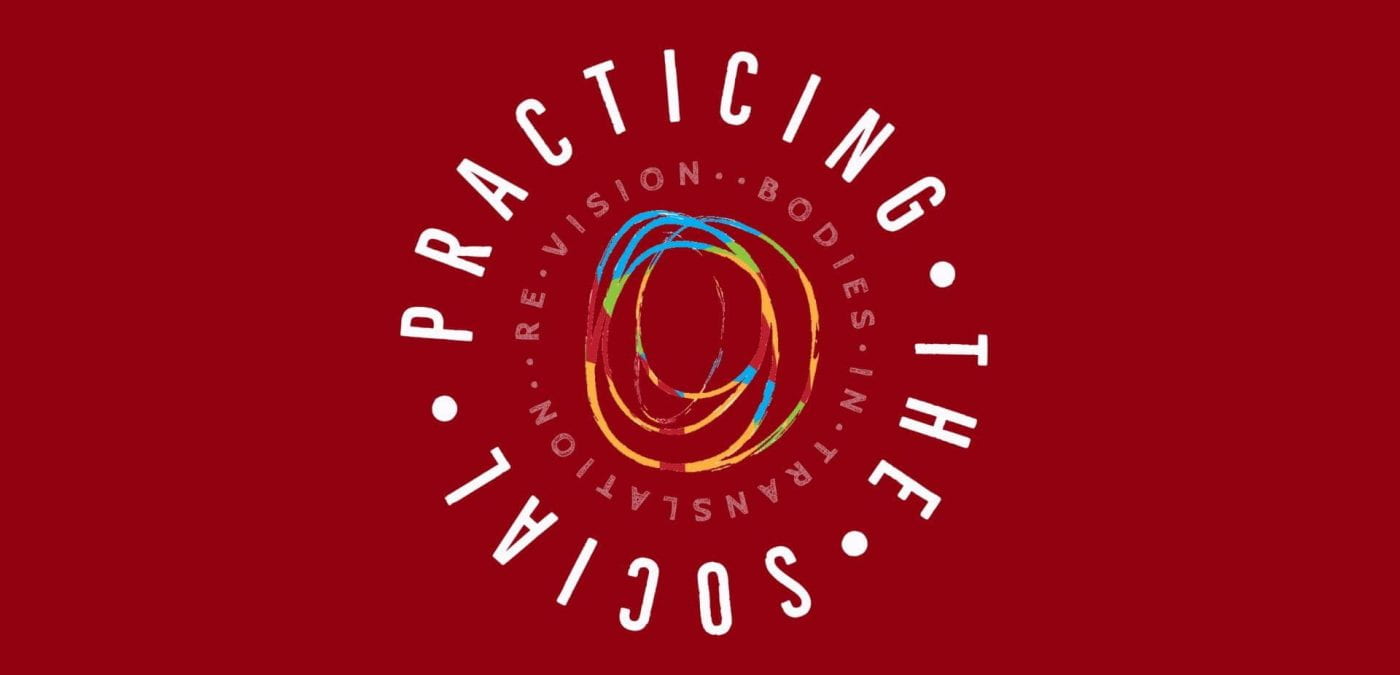The presenters listed below are part of the Concurrent Panel Presentations – see schedule here.
Contents
Ailsa Craig and Tobaron Waxman
A Taste of Queer Survival: Critical Reflections on the Intergenerational LGBT Artist Residency
How are art and community-making interconnected? In what ways can artistic practice work alongside and in conjunction with building larger community resources for social justice and survival? Both a collaborative critical narrative and reflexive, scholarly social analysis, this paper asks these (and other) questions as it moves through reflection upon the creation, maintenance, and ongoing work of the Intergenerational LGBT Artist Residency.
Related links:
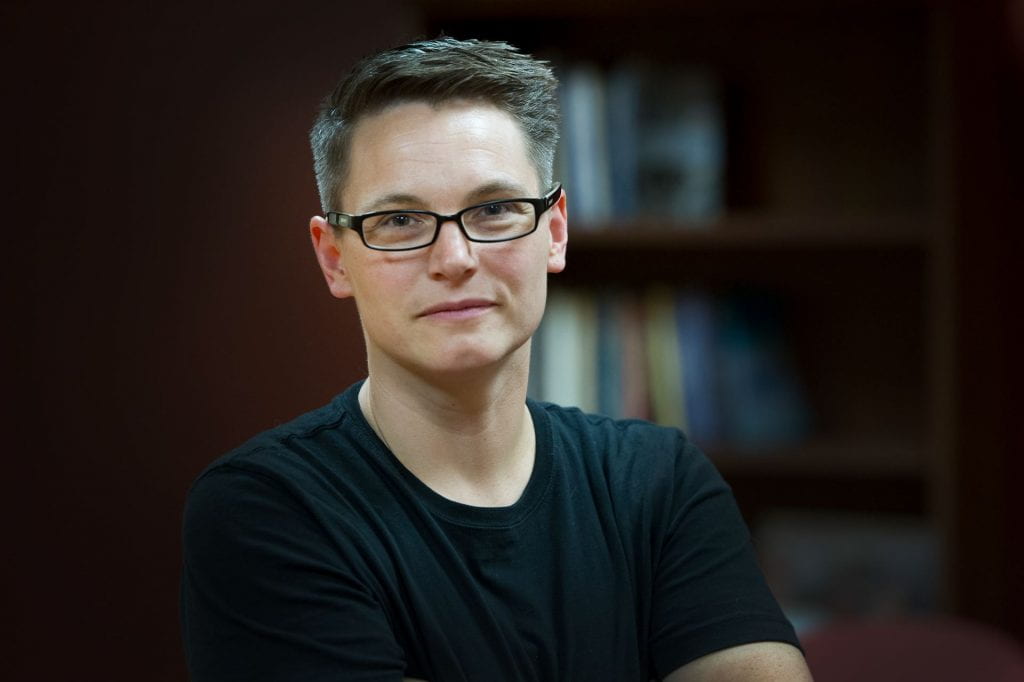
Ailsa Craig is a queer and trans activist, full professor, and academic administrator at Memorial University of Newfoundland and Labrador. Dr. Craig’s research interests include cultural sociology and the sociology of artistic careers; gender, sexuality and structural inequality; community building, mentorship, representation, and the sociology of emotions. Alongside their involvement with the Intergenerational LGBT Artist Residency (ILGBTAR), Dr. Craig is also a co-founder of Quadrangle, a charitable organization working to build a 2SLGBTQAI+ community centre for Newfoundland and Labrador.
Image description: A person with short, greying hair wearing a black t-shirt and black-rimmed glassed stands with arms crossed across their chest, looking into the camera with a slight smile. There is an out-of-focus bookshelf in the background.

Tobaron Waxman is an interdisciplinary artist and curator who sings. Tobaron’s projects investigate how the state imposes borders and parameters on bodies and lands. Their works have been exhibited at such venues as Palais de Tokio, Videotage Hong Kong, Kunsthalle Vienna, FestivAlt Krakow, New Museum NYC, Leslie Lohman Museum of Gay and Lesbian Art, and Brooklyn College Conservatory of Music; and via fellowships at Van Lier, NYC; Akademie der Kunst der Welt, Koln; and Kulturlabor ICI Berlin Institute of Cultural Inquiry. Developing theory on trans vocality as a vocalist, Tobaron has sung liturgy in hospitals, at memorials and weddings; as well as performed at Kampnagel Festival of Choreography and Protest Hamburg, Donau Festival, and Dixon Place NYC. In 2013, Tobaron founded The Intergenerational LGBT Artist Residency, as a combined curatorial, relational/live art, and sociopolitical praxis. Since 2017 Tobaron has lead the Trans Collections at The ArQuives, as part of a collaborative team at the largest independent LGBTQ archive in the world. Tobaron’s writing and photography have been published internationally, including in Carte Blanche (Magenta, 2006), Post Porn Politics (bbooks, 2010), Fast Feminism (Autonomedia, 2010), Trans Bodies Trans Selves (Oxford University Press, 2014) and featured in such publications as Missy, C Magazine, Fuse, Canadian Dimension, Canadian Theatre Review, Lillith, Women & Performance, GLQ, TSQ, and LTTR. Tobaron is the 2022 – 2023 Artist in Residence, Polin Museum/Teatr Powszechny Warsaw, as part of SSHRC: ‘Thinking Through the Museum: A Partnership Approach to Curating Difficult Knowledge in Public.’
Image description: Immersed chest-deep in an emerald green lake, face tilted upwards, a person holds electric clippers to their neck. As they shave their face and head, the pale blue sky is reflected in their eyes. Their reflection reciprocates on the velvety surface of the lake, as tufts of hair fall and float by in the current.
Allison Taylor
Fatness and/as Disability: Using Arts-Based Methodologies to Explore Lived Experiences of Disability and Weight Discrimination
This presentation outlines and critically reflects on the methodological framework for my current postdoctoral research project. My project, titled “Fatness and/as Disability: An Arts-Based Exploration of Disability and Weight Discrimination as Barriers to Women’s Public Participation in Ontario,” uses photovoice and multimedia storytelling methodologies to explore how women who identify as both disabled and fat experience barriers to public participation—via a focus on public resources, services, and spaces— because of intersecting disability and weight discrimination. Accordingly, in this presentation I discuss the potential and limits of using arts-based methodologies to generate alternative and liberatory knowledges about fat and disabled embodiments and experiences. I suggest that, in the context of my current research, arts-based methodologies have unique potential to challenge oppressive ideas about disability and fatness that create barriers to public resources, services, and spaces by providing disabled and fat women opportunities for self-representation and disseminating firsthand, embodied knowledges about their experiences.

Allison Taylor is a SSHRC Postdoctoral Fellow working under the supervision of Dr. Carla Rice at Re•Vision: The Centre for Art and Social Justice. She holds a PhD in Gender, Feminist, and Women’s Studies from York University. Taylor’s dissertation, titled “Fattening Queer Femininities: The Pitfalls, Politics, and Promises of Queer Fat Femme Embodiment,” explored queer fat femme identities, embodiments, and negotiations of femmephobia, fatphobia, and other oppressions in Canada. Her postdoctoral research will use arts-based methods to examine how intersecting disability and weight-based discrimination constitute barriers to public resources, services, and spaces for women in Ontario.
Image description: A photo of Allison, taken indoors in front of a brick wall and a window. She has white skin with blonde hair that is pinned up, is turning to look at the camera at an angle, is smiling, and is wearing a pug-print dress.
Cyn Rozeboom
That We are Not
A freestyle, long-form poem about Art & Social Justice
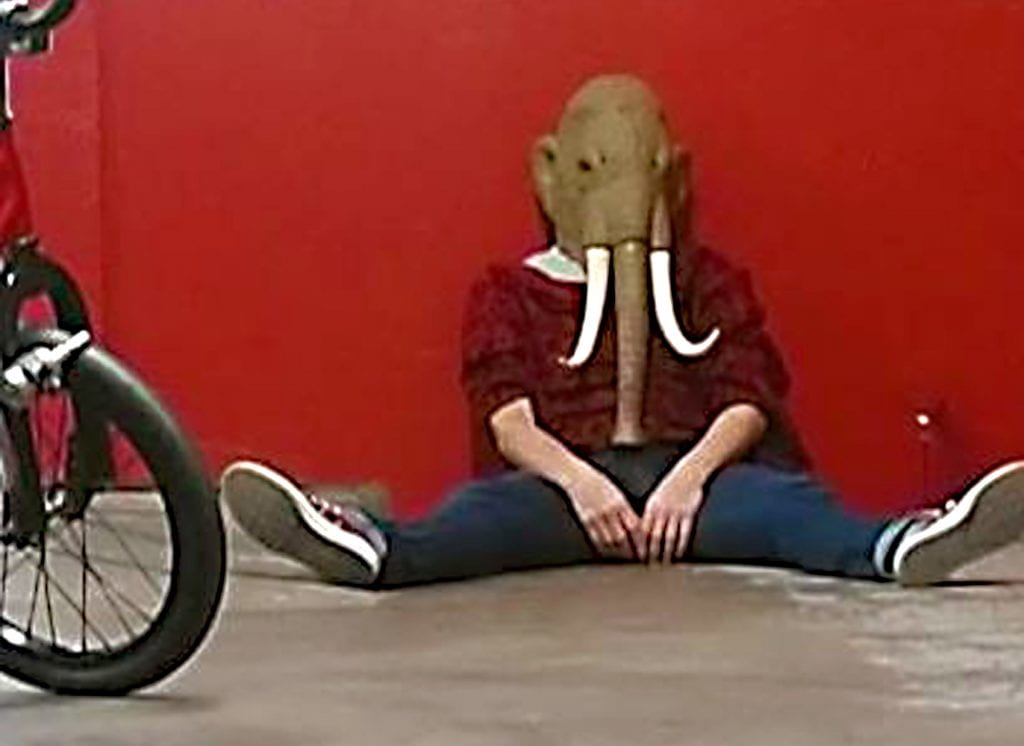
Cyn Rozeboom has worked in the arts sector for over 30 years, as a fundraiser, communications specialist, artist, and administrator. In her current role as Executive Director of https://tangledarts.org/Tangled Art + Disability, she delights in working with her team to subvert the status quo with joy and love.
Image description: A photo of Cyn sitting on a concrete floor, leaning against a bright red wall. Her legs are splayed and hands rest between her legs. She is wearing an elephant mask with long tusks and nose that reaches to her belly. A bicycle tire juts into the frame from the left in the foreground.
Estée Klar and Adam Wolfond
Neurodiversity in Relation: A Processual Artistic Fabulation
For autistics, experience is immersion – the “unfiltered detail” and “blast of the whole” (Manning, Wolfond). This consists of the intensity of affect’s force upon our bodies and movements, often unseen but deeply felt. Affective intensities move us but are categorized as maladaptive in autistic movement. Autistic moves are considered nonsensible and unable to produce a coherent story of experience. Independence and authorship are the neurotypical enactments of subjectivity often tied to identity-thinking. We argue that this delimits neurodiversity’s potential to activate a deeper understanding of the relationality and intrasubjective artistic practice where our standpoints are always blurred. Our collaboration emerges from movement as mother/son, as mutual supporters, as artists. Unbound from neurotypicality’s separations of inside/outside; un/reason; mind-body; in-dependence; subject/object, neurodiversity expresses intramodal sensory experience (such as synaesthesia) challenging linear “orientations” (see Ahmed, 2006) and neurotypicality’s ability (and enforcement) to align to the systems and environments it has built for itself.
Related links:
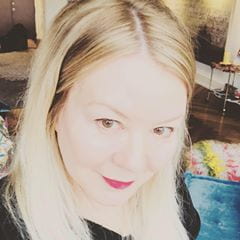
Estée Klar, PhD, is a rogue neurodivergent scholar and artist engaged in artistic experimentation and wayfaring ways. She brings her artistic background with critical disability studies to specialize in neurodiversity in relation that she and her son and non-speaking autistic collaborator who is also a poet-artist, Adam Wolfond, have created as an intraethnographic artistic practice. She is co-director with Wolfond at dis assembly: a neurodiverse arts collective at Artscape Youngplace in Toronto.
Image description: Photo of woman with medium length blonde hair.
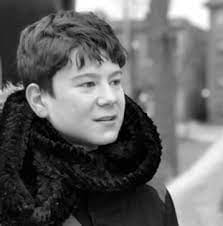
Adam Wolfond is a non-speaking autistic artist, poet and presenter. He is the co-founder of dis assembly: a neurodiverse arts collective in Toronto. Wolfond collaborated on the PhD dissertation Neurodiversity in Relation: an artistic intraethnography with Estée Klar at York University in Toronto, Canada. He is the youngest poet to be published at poets.org. His collaborative exhibition film installation S/Pace continues to screen and was originally presented at Critical Distance Centre for Curators in 2019 as part of the Access is Love and Love is Complicated group exhibition. His chapbooks of poetry In Way of Music Water Answers Toward Questions Other Than What Is Autism, are available through his publisher, Unrestricted Interest. Wolfond’s new work of poetry will be published with Milkweed in 2022 and he is currently completing a book on water and autistic ways of languaging.
Image description: Black and white photo of young man with medium colour short hair wearing black coat and scarf looking off in the distance.
Evadne Kelly
Generative Meetings Through Non-Assimilative Dance?
As a white settler dance artist and scholar, I am actively re-thinking my own relationships to land and travel through space and time and how movement can open generative non-assimilative social experiences of creativity. Agents of colonialism have used dance as a method to bolster white settler Canadian nationalism, forced assimilation and race betterment, with fatal effects. Dance’s fraught role in the history of colonialism and race betterment (including eugenics) has become increasingly clear during my recent experiences contributing to the development of an eCourse called Into the Light: Living Histories of Oppression and Education in Ontario. Here I reflect on our project’s engagement with dance in the process of developing the eCourse. Following the guidance of our project Elder, Mona Stonefish, and the work of several scholars who have contributed knowledge and insight into non-assimilative relational engagement (Ermine 2007; Gaztambide-Fernández 2012; Elwood Jimmy and Andreotti 2019), our group incorporated non-verbal movement creativity within our online meetings. Here I discuss some preliminary analysis of the way movement improvisation as an accessibility method during our online meetings opened generative non-verbal and non-assimilative spaces for creativity. We wove non-verbal experience and communication into our meetings to increase internal awareness in relation to each other and the spaces we were in, and to creatively explore questions around communication and movement in relation to land for our online course. This was an important method for centralizing our bodies in the project and celebrating our differences as a way of countering colonial and eugenic control of life and lives.
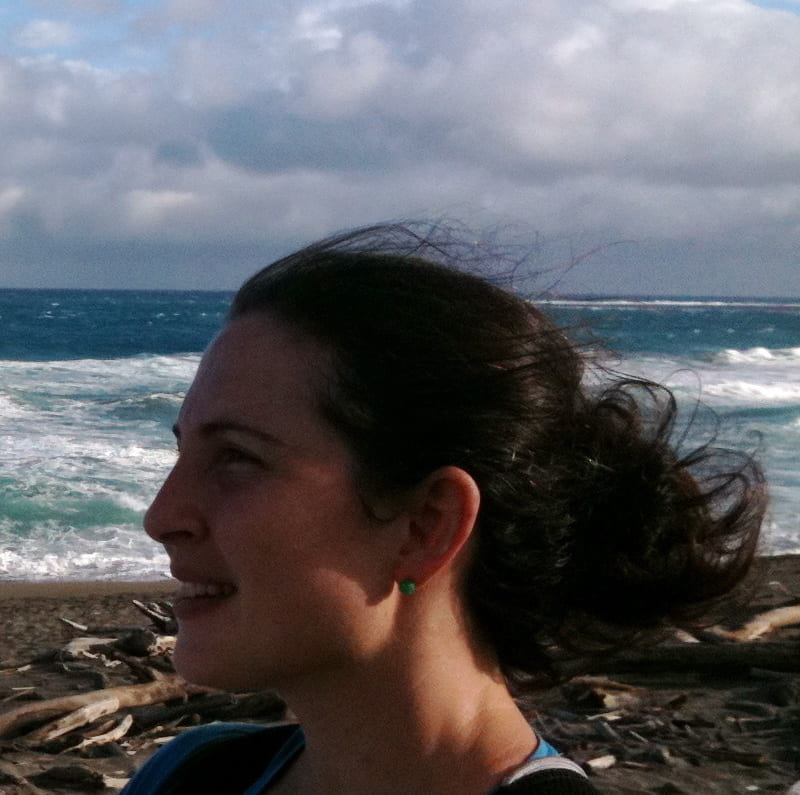
Evadne Kelly is a dance artist and interdisciplinary scholar with a PhD in Dance Studies from York University. Currently, she is a Research Associate at Re•Vision: The Centre for Art and Social Justice, University of Guelph. Publications of her research can be found in Pacific Arts Journal, The Dance Current, Performance Matters, and Journal of the History of Behavioural Sciences. Dr. Kelly’s book, Dancing Spirit, Love, and War: Performing the Translocal Realities of Contemporary Fiji, examines the social and political dimensions of kinesthetic expression and performance. It received support from the Social Sciences and Humanities Research Council and builds on her 20 years of professional dance experience with David Earle. She recently led and co-curating an accessible, arts-activist, community-engaged exhibition (co-funded by Bodies in Translation and Guelph Civic Museum) called Into the Light: Eugenics and Education in Southern Ontario (recipient of the 2020 Lieutenant Governor’s Ontario Award for Excellence in Conservation).
Image description: A profile of Evadne’s head. Evadne is a white, cisgendered woman. She is smiling into the wind as it blows her dark brown hair off her face. Behind Evadne is the Pacific Ocean and a cloudy sky.
Fitsum Areguy and Shalaka Jadhav
Textile: Re-imagining Community-Engaged Arts through Hyper-Local Storytelling
Textile is a community-engaged arts organization and mentorship program based in Waterloo Region, Ontario. It was founded in 2018 with the goal of merging community work with writing and publication to showcase underrepresented stories from marginalized writers/artists. This was also an intentional project to subvert already entrenched settler-colonial narratives and mythologies in Waterloo Region. By the time we launched our inaugural issue in Fall 2019, we had made connections and impact throughout our community that we could not have foreseen. We also encountered conflict, internally and externally, motivating us to continually revisit our goals and expectations. Our session will focus on the theories and philosophies that guide and challenge us throughout our actual, bumpy journey. We will highlight how we balance process and product through a community-engaged art approach. We will discuss how we negotiate racialized identities and power dynamics, and how we hope to move foward in more just and fulfilling ways.
Related link:
- Textile provides mentorship, arts programming, and publication opportunities for new and emerging writers and artists on the margins, showcasing the diversity of the Waterloo Region.
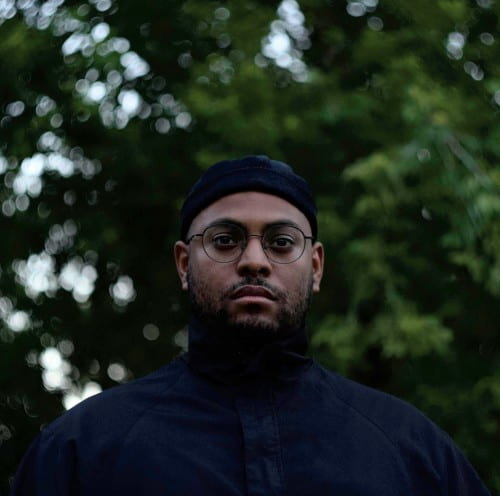
Fitsum Areguy (he/him) is a graduate student in Community Psychology at Wilfrid Laurier University. Broadly, his research interests follow two paths. The first is to interrogate notions of civic and community engagement through Black, Indigenous, and Leisure studies scholarship. The second explores adaptation and identity among youth who provide substantive caregiving for friends, family, and/or kin. As a community-engaged scholar, he values inter/multi-disciplinary collaboration and creative analytic practices to represent work that is accessible and evocative. Fitsum is the co-founder and editor of Textile, a literary publication and mentorship program that showcases emerging marginalized artists and writers in Kitchener-Waterloo. Fitsum also works as a freelance writer and journalist with words published in CBC/Radio-Canada, The Breach Media, Canadian Dimension, Briarpatch, and Waterloo Region Record. He is the co-founder and editor of insideWaterloo, an independent media initiative that amplifies the voices of Black, Indigenous and racialized residents living in Waterloo Region, Ontario.
Image description: Fitsum looks straight forward. He is wearing a black hat, black shirt, and round glasses. Green tree leaves that are out of focus can be seen behind him.
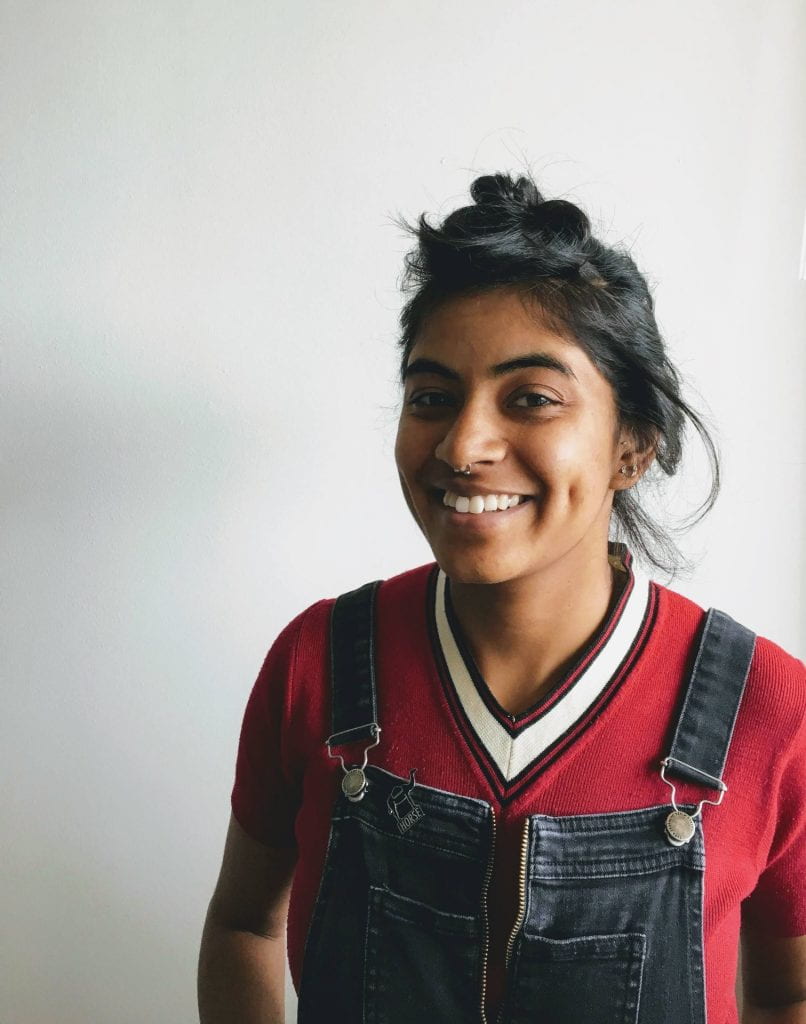
Shalaka Jadhav (they/she) spent their childhood between cities in India and in Dubai, before moving to a neighbourhood spitting distance from Ontario’s largest mall. They now join from the Block 2 of the Haldimand Tract, entangling a long-time curiosity about art-based methods, and their role in enabling unusual connections and collective futures. In their day job, Shalaka designs and facilitates curriculum and workshops that support young people in moving towards just, climate-resilient futures. Trained as an urban planner, Shalaka is following the advice of an aptitude test to pursue Curatorial Practices at the University of Winnipeg. As Shalaka explores and builds on their curatorial ethic, they see it to be guided by a walking methodology, carrying forward the work of their ancestors in tending for the land, and woven together by conversations over cups of tea. In 2021, Shalaka was the Curator-in-Residence at the Centre for Art Tapes. As of fall 2021, Shalaka will be an Emerging Curator as part of the inaugural University of Manitoba School of Art Gallery Visiting Curator Program.
Image description: Shalaka is standing on an angle, smiling. Their hair is loosely up, and they are wearing black overalls with a red short sleeve sweater with a white band in a V-shape. They are standing against a white wall.
Hannah Thompson
Describing Diversity: Audio Description and The Ethics of Unmarked Normativity
Live or recorded audio description (AD) is increasingly available as an assistive supplement to film, television and the performing and visual arts. AD is a form of intermedial translation which provides visual information in non-visual ways. It is primarily intended for blind and partially blind beholders (although I argue that it can have benefits for everyone). Whilst much important work exists on the value and use of AD as an inclusive assistive technology, little scholarly attention has thus far been paid to the ethics of the language choices made by audio describers. Current guidelines, where they exist, encourage audio describers to “say what they see” in order to produce objective and neutral description. Yet we know that language is never neutral. Every language act implies a choice, or set of choices on the part of the describer, and these choices, which often reveal hitherto unacknowledged value judgements on the part of the describer, will inevitably influence the beholder’s understanding of the thing described. This paper will draw on research conducted as part of the 2019 “Describing Diversity” project to ask how human characteristics, including race, ethnicity, body shape, disability and gender can be evoked in ethical and equitable ways. By exploring what is at stake in the description of normative and non-normative bodies, we will attempt to define what “ethical audio description” might look like, and investigate how this new kind of social-justice-inspired access model can and should work to foreground the paradoxical invisibility of unmarked normativities such as whiteness and non-disability.
Related links:
- Describing Diversity research project and report
- Inclusive Description for Equality and Access research project
- Quai Branly Museum (Paris): Discovering Painting through Listening
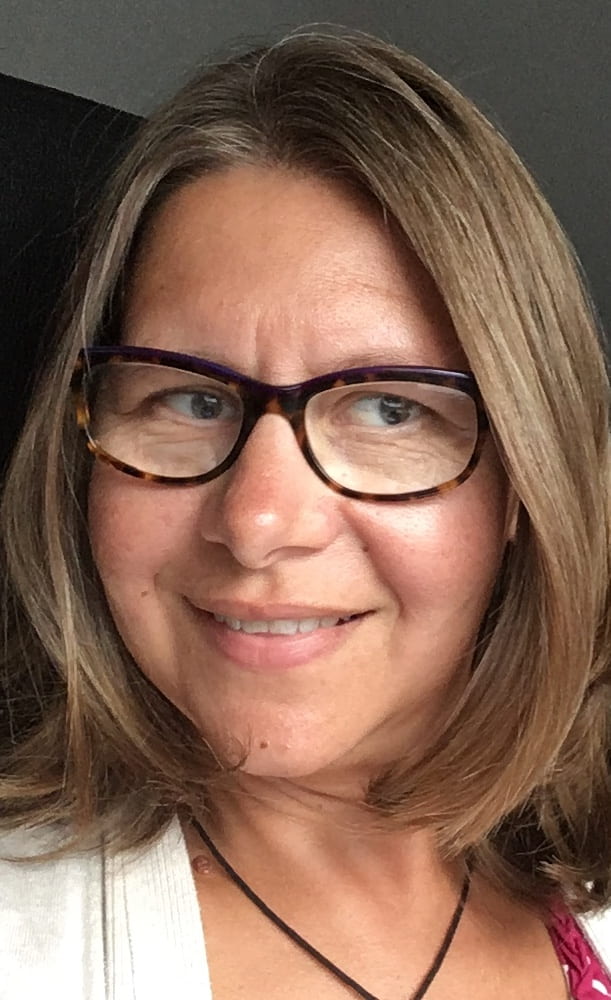
Hannah Thompson is a partially blind academic and activist. She is Professor of French and Critical Disability Studies at Royal Holloway, University of London, UK where she specializes in nineteenth- and twentieth-century French literature and the visual arts, translation studies and audio description.
Hannah is currently one of 10 AHRC Equality, Diversity and Inclusion Fellows, and is working on creative audio description in museums, art galleries and theatres. She writes about her experiences as a partially blind person in a resolutely visual world on her blog Blind Spot.
Image description: A white cis woman in her late forties with long mousy-grey-blond hair framing her round face. She is smiling and wearing thick glasses with tortoise shell and purple frames. They magnify her wrinkles below eyes that look a bit like cat’s eyes.
Jen Sebring, Christine Kelly, and Michael Orsini
Embodying Accountability: Rethinking Measurement Tools for Disability, Mad and d/Deaf Art
Embodying Accountability is an exploratory project that considers whether the outcomes of activist art can be documented and measured. Metrics are useful for securing funding, training, and other professional development opportunities; however, art created by disabled, d/Deaf and mad artists arguably seeks to challenge quantification. Embodying Accountability addresses this tension through innovative audience engagement and outcome measurement strategies aligned with the objectives of the artists. Through this participatory, qualitative pilot project, we developed a process to creatively measure the affective, political, and other relevant outcomes of disability arts events. We partnered with artists and curators of two explicitly activist-oriented disability, d/Deaf, and mad arts exhibitions in Winnipeg, Manitoba in 2020-21. The first exhibition, De-Isolating a Pandemic, a portrait series by Lani Zastre, reflected on the emotional challenges of isolation in the context of COVID-19, especially for those living with mental health conditions. The second exhibition, Cripplepalooza, a cabaret presented by Sick + Twisted, challenged conventional understandings of disability by addressing sexuality, narrative tropes, and institutionalized ableism. Through consultation with the artists we tailored methods specific to their exhibition and objectives. This presentation gives an overview of the engagement process and tools developed for these collaborations and explores the challenges and tensions inherent to “measuring” artistic outcomes.
Related link:
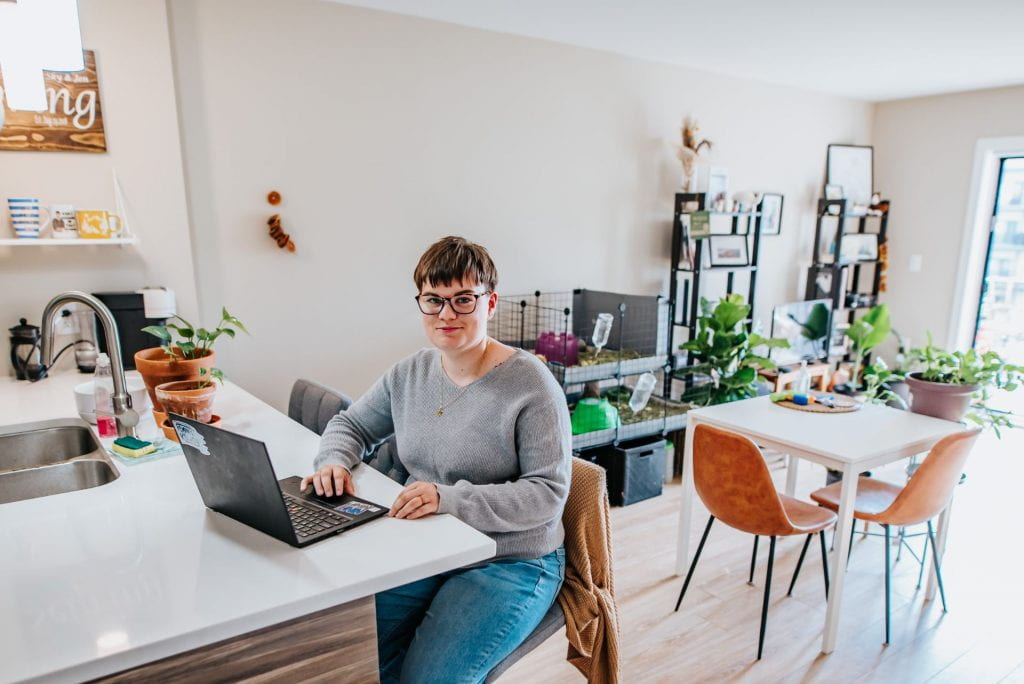
Jennifer (Jen) Sebring is a graduate student in Community Health Sciences at the University of Manitoba. Their research uses critical disability studies and arts-informed methods to look at the healthcare experiences of people living with chronic illness. Jennifer holds an Honours BA in Women’s and Gender Studies from the University of Winnipeg.
Image description: Jen, a white genderqueer person with short brown hair and glasses sits at their kitchen counter with their laptop open.
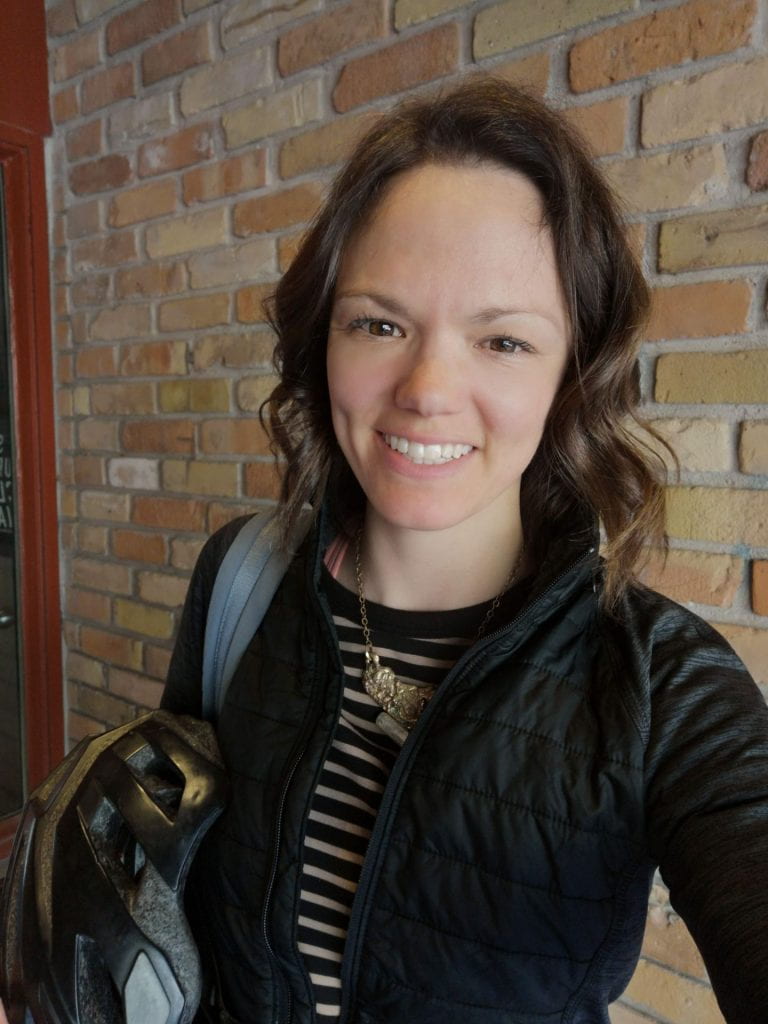
Christine Kelly, PhD, is an Associate Professor in Community Health Sciences and a research affiliate with the Centre on Aging at the University of Manitoba. Dr. Kelly uses qualitative methods to explore the continuing care policy, aging, and Canadian disability movements.
Image description: A white woman with dark wavy hair smiles in front of a tan-colored brick wall. She seems like she is on the go, with a backpack strap visible on one shoulder and a bike helmet under her arm.
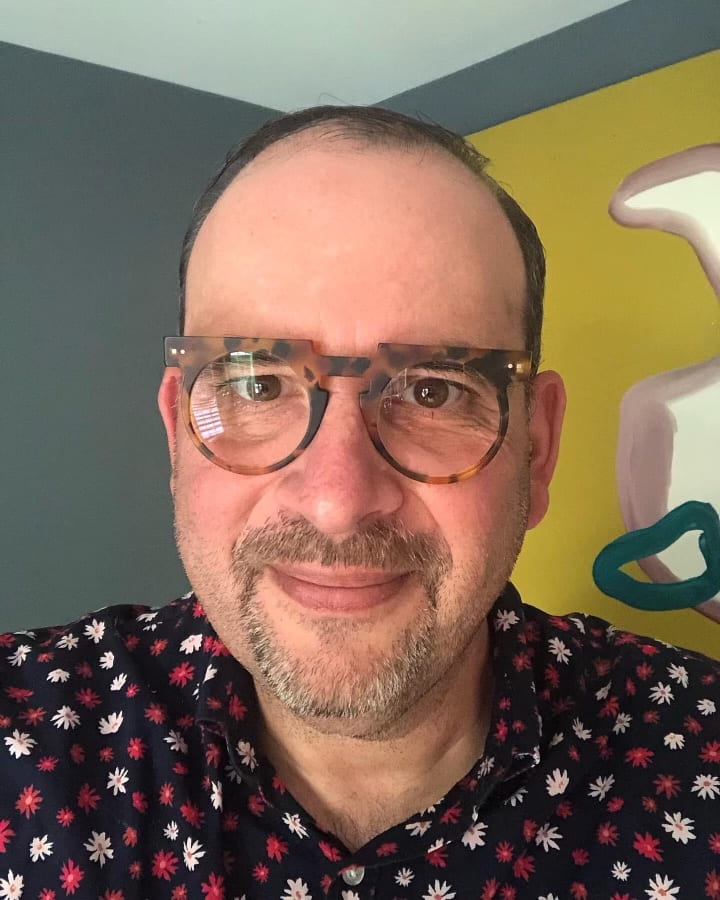
Michael Orsini is Professor in the Institute of Feminist and Gender Studies and the School of Political Studies at the University of Ottawa. He specializes in critical approaches to policy in the fields of health and disability.
Image description: A close up of white man with brown tortoise-shell glasses and a greying goatee wearing a blue collared shirt with red and white flower pattern. Dark grey wall in background and partial image of abstract painting in mustard -yellow-green with pink, white and blue flourishes.
Jessica Watkin and Sarah Robbins
Intersectional Feminism as Pedagogy: Navigating an Ethics of Care in Research
How can the employment of Intersectional Feminism as pedagogy in conducting graduate research reposition the quality of the knowledge-making generated by such arts-based research practices within the larger interests of the neoliberal university? Building upon Dr. Kathleen Gallagher’s assertion in The Methodological Dilemma of the impossibility of assuming a position of objectivity in qualitative research, how does the feminist practice of making explicit ones’ situationality in relation to the work act as a foundational step in ethical investigation within the social sciences? Together, the authors discuss and explore techniques of practising research that do not feel disingenuous in the context of a field (theatre and performance) dominated by a neoliberal perspective to marginalized communities such as women and disabled people.
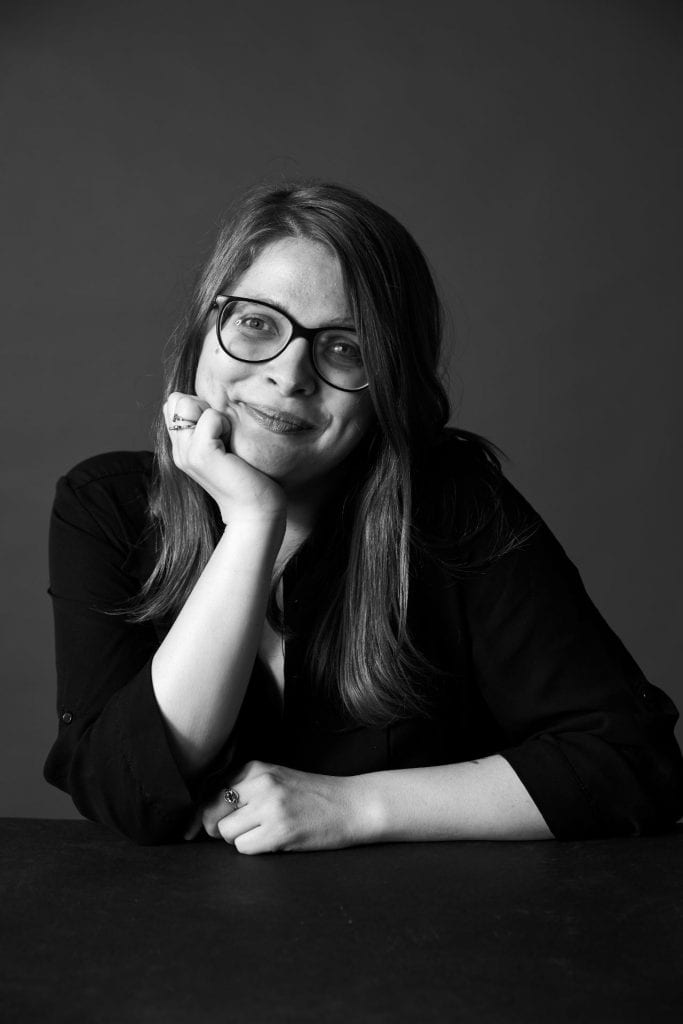
Jessica Watkin is a PhD Candidate at the University of Toronto’s Centre for Drama, Theatre and Performance Studies with research focusing on Disabled artists in Canada and their creation processes, dramaturgies, and support systems. She is a Blind and Disabled scholar, interdisciplinary artist, dramaturg, consultant, educator, and reader. She has been published in the Canadian Theatre Review, The Drama Review, and Theatre Research in Canada, and has attended Theatre Research conferences internationally. She currently co-facilitates the Disability, Pedagogy, and Performance Working Group at the Canadian Association of Theatre Research and is working to co-create definitions of what Accessibility Design and Disability Dramaturgy mean in a Canadian context.
Image description: A black and white photograph of Jess Watkin, a white woman with glasses and a bright smile. Jess rests her head on her hand with her head tilted to the side, smiling towards the camera.

Sarah Robbins is a PhD Candidate at the University of Toronto’s Graduate Centre for Drama, Theatre and Performance Studies (CDTPS). She holds a B.A. Hons. and a diploma in Professional Actor Training from the theatre and drama studies program jointly held at the University of Toronto Mississauga and Sheridan College, and an M.A. from the CDTPS. Recently, Sarah co-organized the inaugural Got Your Back (GYB) Acting Educators Conference at Tarragon Theatre, as well as the 2019 Festival of Original Theatre/Theory/Thought (FOOT) Conference at CDTPS on the theme of “Equity & Diversity in the Performing Arts.” Current projects include working as a Research Assistant for the SSHRC-funded Gatherings Partnership, and acting as the Graduate Student Representative on the Board of Directors of the Canadian Association for Theatre Research (CATR). She has shared her work at CATR and PSi, and has published her work in alt.theatre magazine, and HowlRound Theatre Commons.
Image description: The image is a black-and-white headshot of Sarah Robbins. She is seated on a wooden chair with her arms resting on a table in front of her. She is smiling.
Julia Gray
Imagining Audiences as “Accomplices” in Performance Research
This paper will contribute to scholarly conversations that critically consider philosophical underpinnings of a newly emerging arts-based or research-creation paradigm as well as implications for the interrelationship among aesthetic mediation, cultural production and social critique/change (Conrad & Beck, 2015; Leavy, 2018; Parsons et al, 2017; Harris, Hunter & Hall, 2015; Denzin, 2017; Manning, 2016; O’Donoghue, 2014). To fulfil this aim, I will explore the ways that artist-researchers, involved in a performance research project called ‘Cracked: new light on dementia’ (Collective Disruption, 2017), imagine how future audience members might engage with performance events, and what these imaginings mean for the artists’ research-creation processes as generative, exploratory, situated, and relationally and aesthetically accountable. ‘Cracked’ invites audience members to reconsider the tragedy discourse of dementia and its implications for stigmatizing interpersonal interactions and broader social policy development (see for example Gray et al, 2020; Kontos et al, 2018; Gray et al, 2017; Dupuis et al, 2016; Kontos, 2012; Mitchell et al. 2012). By drawing from interviews with actors involved in the creation of this play, I will critically interrogate assumptions of audience members as passive observers who uncritically take up research messages embedded within the play.
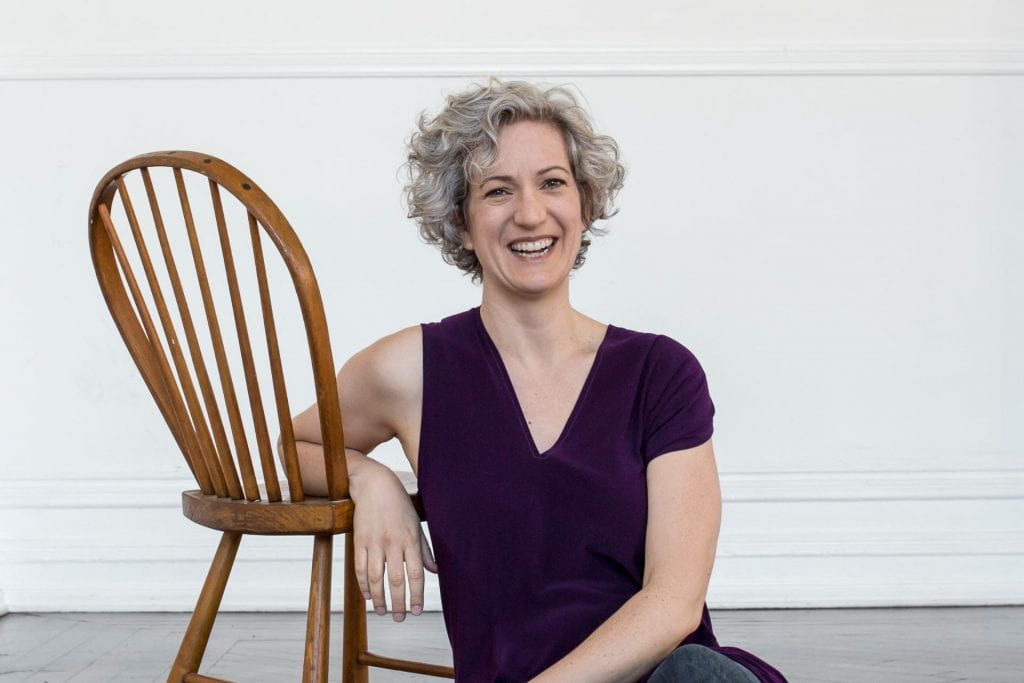
Julia Gray is an Assistant Professor, Teaching Stream in health humanities in the Department of Health and Society at the University of Toronto Scarborough. She is an interdisciplinary cultural and performance studies scholar, artist-practitioner (playwright/theatre director) and critical social scientist. Her program of research incorporates methodologies and theoretical bearings from the arts, humanities and social and health sciences to interrogate notions of inclusion related to aging and disability; she aims to bolster senses of belonging by engaging different ways of becoming and knowing through performance and the arts.
Image description: A white woman with curly silver hair is sitting beside a wooden chair, with her elbow on the chair. She is laughing.
Karleen Pendleton Jiménez
The Street Belongs to Us: Eco-Social Pedagogies presented through a Children’s Novel
For the past dozen years I kept a children’s novel in my drawer, hoping one day to finish writing it between teaching, research, and meetings. The book began as a strategic challenge for myself, to write a queer children’s novel. While I was aware of some queer picture books and YA novels, I hadn’t read any for the middle grades, ages 8-12. What characteristics could I show in terms of gender and sexuality for that age group? How much desire, romance, love, cross-dressing would be enough but not too much for young readers? With this question, I refer both to the standards of schools and libraries, but also to what would be engaging or alienating to the kids themselves. A novel gives you the room and responsibility to create a whole world, and queerness, of course, is only one piece of this world. A novel allows you the words to truly create and examine nuanced and rich intersectionality.
What began as the adventures and love of a tomboy/nonbinary/trans boy/girl and her/their/his best friend took me back into the colonization and exploitation of my Southern California childhood. I found myself sitting beside my grandmother and listening to her stories of the Mexican revolution. I learned patience through her dementia. I struggled with anti-Mexican discrimination in the city where I lived, as I tried to understand my own place as a mixed Mexican-White kid. I found myself protecting my mother from anti-fat harassment. I held my friend as he suffered from grief over the death of his mother, while fighting back against the kids taunting him for not acting more “normal”. The process also unearthed the earth and the ways in which the land and water had been buried in concrete all around us, distancing us from learning from the land. We jumped on the opportunity for the joy of more loving relationships with the earth. Finally, like a good critical pedagogue, I attempted to craft a book that opened up questions about eco and social justice, rather than providing the correct answers. The Street Belongs to Us is as much a child’s adventure story as it is the culmination of 25 plus years of teaching and researching anti-oppression education, and as I watch it appear in libraries and bookstores, I realize it continues to be my most successful medium for presenting my ideas to the world.
Related links:
- Karleen Pendleton Jiménez website
- The Street Belongs to Us by Karleen Pendleton Jiménez (one minute book talk)
- Five Minute Author/Book presentation

Karleen Pendleton Jiménez is a writer and professor of education, gender and social justice at Trent University. Her research explores intersections of queerness, gender, race and ethnicity through creative writing. She is the author of Lambda Literary Awards finalists Are You a Boy or a Girl? and How to Get a Girl Pregnant. She wrote the award-winning animated film Tomboy, and has been recognized by the American Library Association and the Vice Versa Awards for Excellence in the Gay and Lesbian Press. Selected book chapters and journal articles include: “Start with the Land: Groundwork for Chicana Pedagogy,” “ ‘I will whip my hair” and “hold my bow”: Gender-creativity in rural Ontario, “The Making of a Queer Latina Cartoon: Pedagogies of Border, Body, and Home,” and “Fat pedagogy for queers: Chicana Body Becoming in 4 Acts”. Her book Tomboys and Other Gender Heroes: Confessions from the Classroom explores queerness and homophobia in schools. Her new book The Street Belongs to Us (for 8 years old and up) explores intersections of gender diversity, ethnicity, and relationships with the land. She also wrote the screenplay for the award winning animated short film Tomboy.
Image description: Butch with short brown hair and white t-shirt leans forward smiling. Behind her/him there is beige latticework and green leaves.
Kate Reid
Facing the Music: ‘Captain Cupcake and the Cambie Hotel,’ Transmisogyny, and the Ethics of Representation
The purpose of this paper is to theorize the productive and disruptive frictions and ruptures that can occur at the intersections of musical artistry, research, education, and activism. I contemplate the relational justice that might be attained by investigating a particular and uncomfortable methodological dilemma that surfaced during my doctoral research in April 2018. At the beginning of my study, I performed a particular song from my repertoire, among others, for a class of students by way of introducing myself as a professional recording artist and researcher who uses songs to facilitate discussions about gender, sexuality, bodies, and relationships. At the end of the study, 2 and a half months later, a transgender student informed me that a lyric in one particular song I performed on that first day was transphobic. What ensued was a conversation with him and his classmates that involved a deeper and enlightening (and uncomfortable!) analysis of the lyric in the context of trans lived experiences. Turning to Ahmed’s (2016) and Serano’s (2007) scholarship in trans studies, I reflect on my creative practices as a queer singer-songwriter, discuss the possibilities and limitations of bearing witness to other’s lives in song whose identities I do not embody, and reflect on my own potential to do harm as an artist. Simultaneously, I chart my experience of my own transitioning gender identity which was taking place in tandem with this transformational learning experience.
Related link:
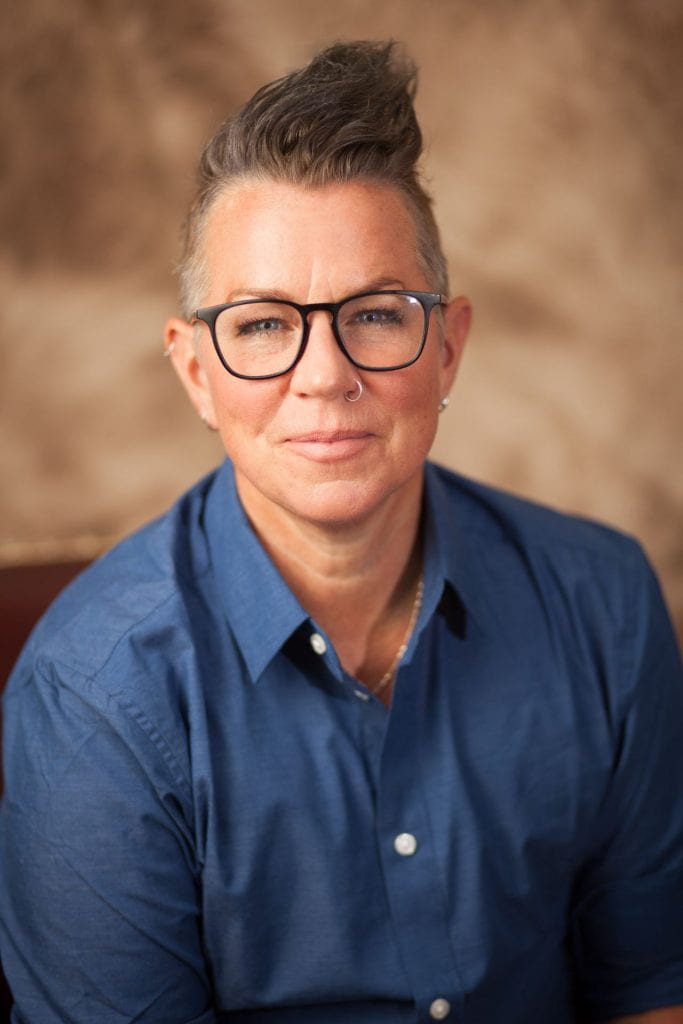
Kate Reid is a Postdoctoral Fellow in Children, Childhood & Youth Studies at York University on a research project entitled, Connecting Culture and Childhood: Using Musical Arts Programming to Promote Belonging for Young Newcomers in the GTA with ethnomusiciologist and Associate Professor, Dr. Andrea Emberly. This study investigates the impact that participation in a children’s community choir has on the resettlement experiences and well-being of newcomer and refugee children. As the Principle Investigator on a SSHRC Explore Grant and the Co-Investigator on a grant from the Child and Youth Refugee Research Coalition (CYRRC), Kate is also currently conducting songwriting and recording research with newcomer and refugee children using a methodology she developed called, “collaborative ethnographic songwriting” (CES). CES is a participatory, qualitative, research-creation method used to collect, analyze, and disseminate research data through music while supporting individuals to express, narrate, and document their lived experiences in song. Prior to obtaining their PhD in Education from the University of Toronto, Kate completed an MA in Gender, Race, Sexuality and Social Justice from The University of British Columbia, a BEd. from The University of British Columbia, and a Baccalaureate in Arts from the University of Guelph. Kate is professional singer-songwriter and recording artist and has composed and recorded 5 albums and several singles. They have toured extensively across Canada, and into the USA and Germany, performing at live music venues; public schools; universities; music and Pride festivals; folk music clubs; youth, arts, and academic conferences; community organizations; union meetings; and in people’s living rooms.
Image description: Kate Reid is facing the camera and smiling wearing a denim-coloured blue button-down shirt and black-rimmed glasses. Their dark grey hair is shaved on the sides and swept up on the top.
Katie Aubrecht, Carla Rice, Eliza Chandler, Janice Keefe
Bodies in Translations: Reflections on Age, Disability, and Bodily Transitions in the Social
This proposed contribution will share and reflect on results and insights from an analysis of the Bodies in Translation: Age and Creativity group art exhibition, Mount Saint Vincent University (MSVU) Art Gallery in Halifax, Nova Scotia, Canada (Fall 2017), a multi-partnered research project in which we were all engaged in as researchers, organizers, and curators. This exhibition brought together seven multidisciplinary artists from the Maritime region who identified as aging/older. As it happened, although it was not a requirement for participating in this exhibition, all of the artists engaged themes of aging as loosely connected to experiences of transformation over time in their art, the ways they spoke about their changing artistic practice, or both. The exhibition highlighted discontinuous and discordant interpretations of aging and older people. In doing so, it embodied, and conditioned, a dialectical process of co-creation involving artists, curators, researchers, educators, community members, and policy makers.

Dr. Katie Aubrecht is an Assistant Professor in the Department of Sociology and Canada Research Chair Health Equity and Social Justice at St. Francis Xavier (St.F.X.) University in Antigonish, Nova Scotia. Her research program analyzes marginality and mental health, rurality and resilience across the life span as health equity and social justice issues. This work draws on social theory, intersectional disability studies, aging studies and interpretive, decolonizing and arts-informed qualitative research methods to analyze disability and care education, policy and practice. As Director of the Spatializing Care: Intersectional Disability Studies Research Lab at St.F.X., Aubrecht leads a participatory arts-informed health research infrastructure that supports and enhances meaningful and ethical community engagement and cross-sectoral collaboration to bridge medical, social and cultural approaches to care.
Image description: A smiling woman with dark hair pulled back and dark-rimmed glasses sits with her right arm resting on the back of a brown chair. She is wearing a light brown blazer, a white shirt, and a turquoise necklace. A wood panel wall is behind her.
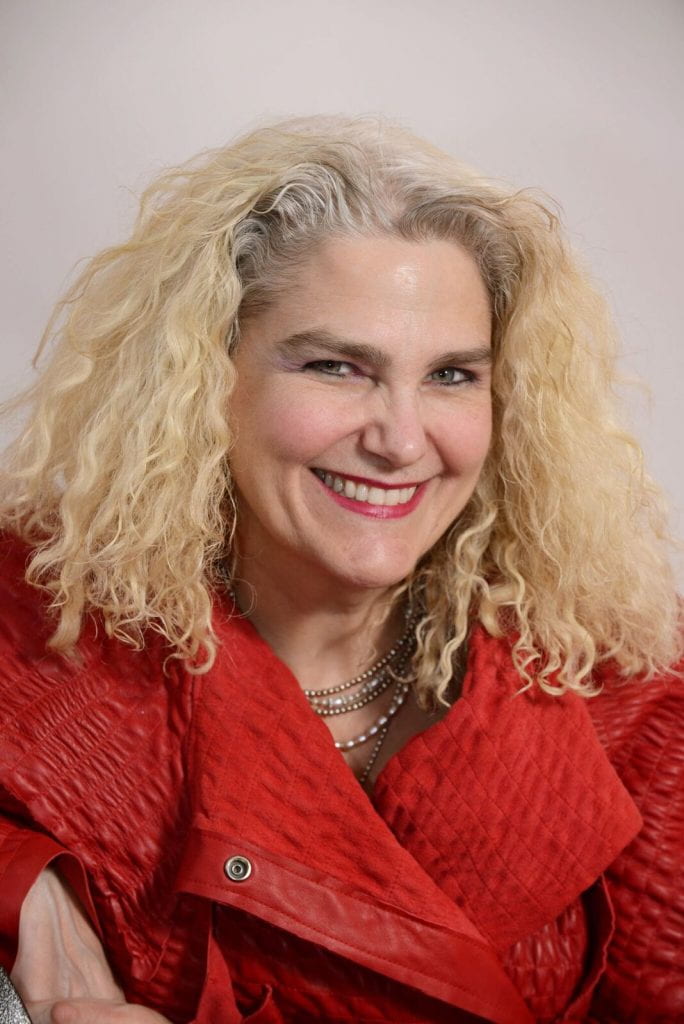
Dr. Carla Rice is Professor and Canada Research Chair at the University of Guelph, specializing in disability and embodiment studies and in unconventional and creative research methodologies. In 2012, she founded the Re•Vision: The Centre for Art and Social Justice as an arts-informed research centre with a mandate to foster inclusive communities and social well-being. She is Principal Investigator of Bodies in Translation: Activist Art, Technology and Access to Life, a multi-year, multi-site disability and non-normative arts grant that she co-directs with Dr. Eliza Chandler. She has received awards for advocacy, research, and mentorship has published on embodied difference, non-normative cultures, and practices of accessibility and inclusion. Published books include Gender and Women’s Studies: Critical Terrain (with Marg Hobbs, 2nd Edition, 2018); Becoming Women: The Embodied Self in Image Culture (2014); The Aging/Disability Nexus (with Katie Aubrecht and Christine Kelly, 2020); and Thickening Fat: Fat Bodies, Intersectionality and Social Justice (with May Friedman and Jen Rinaldi, 2020).
Image description: She/they is/are looking at the camera and smiling while wearing necklaces, red lipstick, and a bright red jacket. She/they are white and have long, curly blond hair.
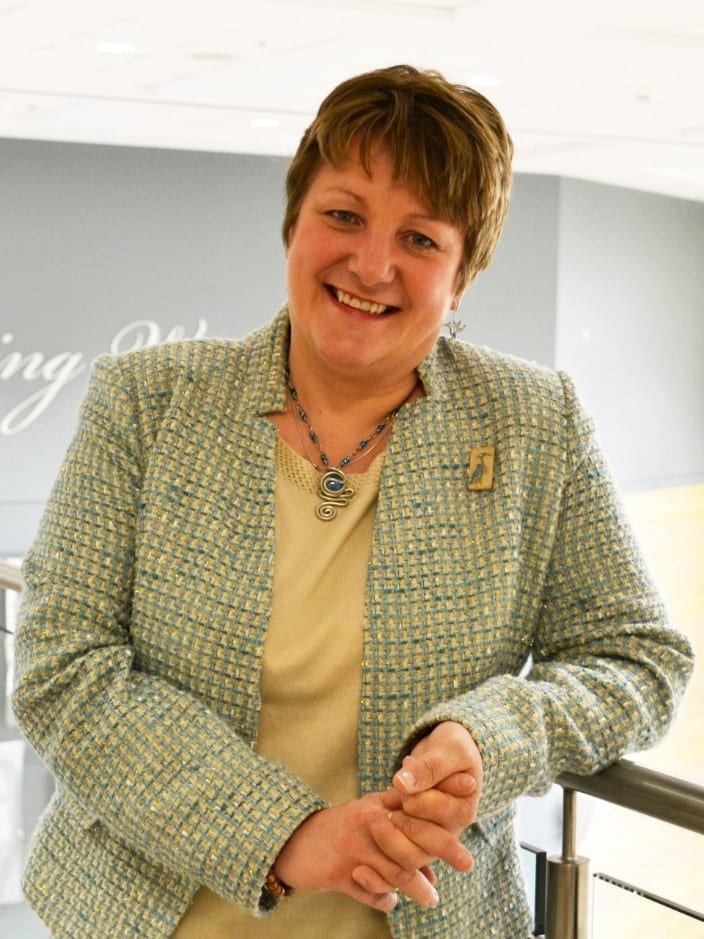
Janice Keefe is Professor and Chair of Family Studies and Gerontology at the Mount Saint Vincent University. She holds the Lena Isabel Jodrey Chair in Gerontology and is Director of the Nova Scotia Centre on Aging. Dr. Keefe is an Adjunct Professor with Dalhousie Medicine and Affiliate Scientist with Nova Scotia Health. She sits on numerous advisory committees such as Statistics Canada’s Demography Committee, Canadian Dementia Strategy, Canadian Institute of Health Information and is Vice-Chair of the European More Years Better Lives Scientific Advisory Board. Earlier this year, Dr Keefe was named a Fellow of the Canadian Academy of Health Sciences. She is the Scientific Director of Seniors – Adding Life to Years (SALTY), pan-Canadian research examining quality of life for residents in long term care (LTC), Principal Investigator on CIHR-funded Homecare Pathways project, and leads research examining the implementation of support visitations by family during COVID. Her research expertise centers on family/friend caregivers, continuing care policies and rural aging. Dr. Keefe has published more than 80 scholarly articles and more than 75 technical reports for government in her 30-year career and mentors many graduate students and post–doctoral fellows in this research area. She continues to chair the NS Ministerial Expert Panel on LTC and co-authored the 2020 Royal Society of Canada’s report on COVID-19 and the future of LTC.
Image description: Janice has short reddish-brown hair and smiles openly at the camera. She wears a pale green and yellow blazer over a pale yellow shirt, with a blue and gold necklace and heron brooch. Her hands are clasped in front of her.

Dr. Eliza Chandler is Assistant Professor in the School of Disability Studies at X University, wherein she teaches courses on disability arts and culture, cultural representations of disability, leadership and community building, and intersectional activist movements. Earning her PhD from the Social Justice and Education department at the University of Toronto in 2014, Chandler was dually appointed as the artistic director at Tangled Art + Disability, an organization in Toronto dedicated to the cultivation of disability arts, and the postdoctoral research fellow in X University’s School of Disability Studies from 2014-2016. During this time, she was the also the founding artistic director of Tangled Art Gallery, Canada’s first art gallery dedicated to showcasing disability art and advancing accessible curatorial practice. Chandler is also the co-director of a Social Sciences and Humanities Research Council (SSHRC)-funded partnership project, Bodies in Translation: Activist Art, Technology and Access to Life, a seven-year research project that interrogates the close relationship between activist art and the achievement of social justice. She is also the director of a SSHRC Insight Development Grant that explores how accessibility practices that are led by disabled people and our politics change how we create and interact with arts and culture. Chandler is a practicing curator and regularly gives lectures, interviews, and consultations related to disability arts, accessible curatorial practices, and disability politics in Canada.
Image description: Eliza, a white physically disabled woman, stands on a path in a park surrounded by trees. She is wearing a white shirt and black sweater and she is smiling at the camera.
Kimberly J. Lopez
Body Work, On-Body Work: Social Skin Revealing Caring Labour
The paper describes the ways body mapping elicited cognitive, affective, and un-surfaced reflections of the body as it engaged with political acts of caring in bodies of difference. Body mapping turns the body into a political and activist art piece. As articulated by Huss (2012), “in community art and art as social change, art can be used as an indirect form of resistance to the cultural context in which it is embedded” (p. 1444). Being art is disruptive. Art renders a subject, not previously represented/heard/seen, present/heard/visible. Acknowledging being through art, and simply sensitizing self to one’s being ‘speaks’ loudly to break silences that accompany invisibilities of minoritization and reclaims space through artistic occupation. For instance, following artistic re-creation of the body through body mapping, Nicola, a PSW, reflects, “It’s not easy and then we are not born to do this, we have different knowledge and we are smart too!” Complete with accounts of failing, flailing, and flourishing in processes of knowing-through-narrative, this paper will contextualise the emergence of restorative space and antenarrative through embodied methods (body work) and appreciative reflection with PSWs who labour on aging bodies (on-body work).
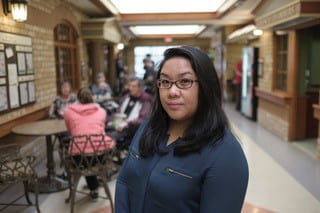
Kimberly J. Lopez works as an Assistant Professor in the Department of Recreation and Leisure Studies at the University of Waterloo on the Haldimand Tract land promised to the Haudenosaunee of the Six Nations of the Grand River, and is the traditional territory of the Neutral, Anishinaabeg, and Haudenosaunee peoples in Ontario, Canada. As a community-engaged qualitative researcher, Kim is interested in critically examining structures that (re)produce oppressions affecting experiences of racialisation, aging, long-term care, care labour, leisure, and well-being. She values working collaboratively to amplify individuals who identify with justice-deserving groups. To do this, Kim looks to influencers of anti-racist feminisms, anti-colonial and restorative practices, and corporally informed literature/art to hear knowings held in bodies that labour to care. She was recently recognised as the 2020 Canadian Association of Leisure Studies Emerging Scholar and in 2021 as the Faculty of Health Emerging Scholar Mentorship Award holder.
Image description: A woman with a dark turquoise shirt, medium length black hair, and rectangle glasses looks at the camera with a neutral face. She is pictured from the elbows up, standing in the middle of a blurred hallway in a brightly lit long-term care home.
Lauren Munro and Ciann Wilson
Enacting (Disability) Justice in Arts-Based Research
The disability justice framework has much to offer arts-based researchers in our desire to engage in projects that are accessible and transformative. As Mingus (2011) pointed out, “Disability justice has the power to not only challenge our thinking about access but to fundamentally change the way we understand organizing and how we fight for social change.” (para. 9). This paper will consider how lessons learned within arts and disability culture and the application of the disability justice framework can improve ABR. Using a question-posing format, we will review the various stages of an ABR project, including, engagement, outreach, relationship building, methods, participation, and the sharing of findings to offer insight into how disability justice principles could be integrated into our process. Recognizing that the ways in which these principles inform a project are complex and intertwined, it is important to note that the examples we give are based on our own work and observations, alongside best practices in community event organizing; we see this as the beginning of a much-needed conversation. We do this work with the understanding that bringing together movement-based principles and academic frameworks can be a fraught endeavour; thus, we aim to make space for productive tensions.
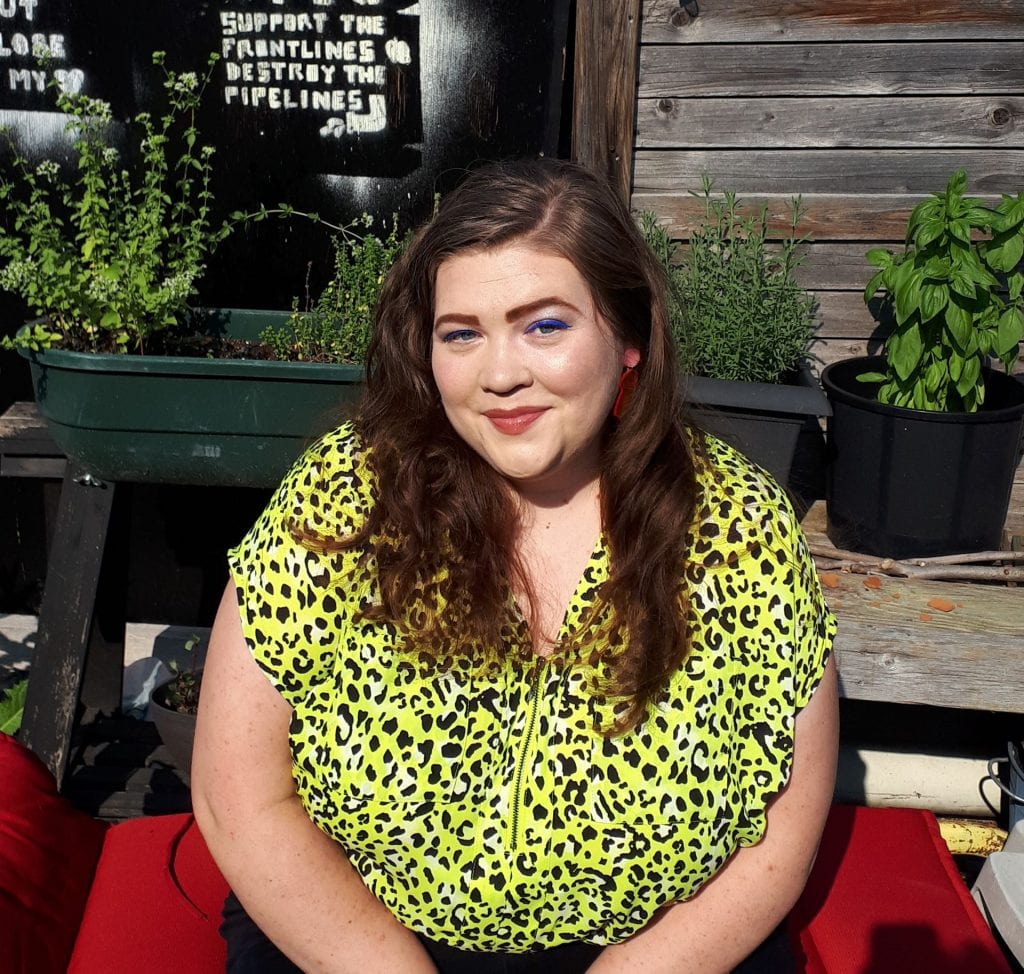
Lauren Munro is a PhD candidate in the Community Psychology program at Wilfrid Laurier University, whose personal and professional life is driven by a commitment to social justice. She is a fat activist, artist, and writer who strongly believes in the importance of integrating academia and grassroots activism to create projects that push boundaries and challenge the status quo.
Image description: A fat white woman with long brown hair and blue eyes is smiling directly at the camera. She is wearing a neon green leopard print shirt and has her hands in her lap. In the background are several potted plants and a fence with graffiti on it.
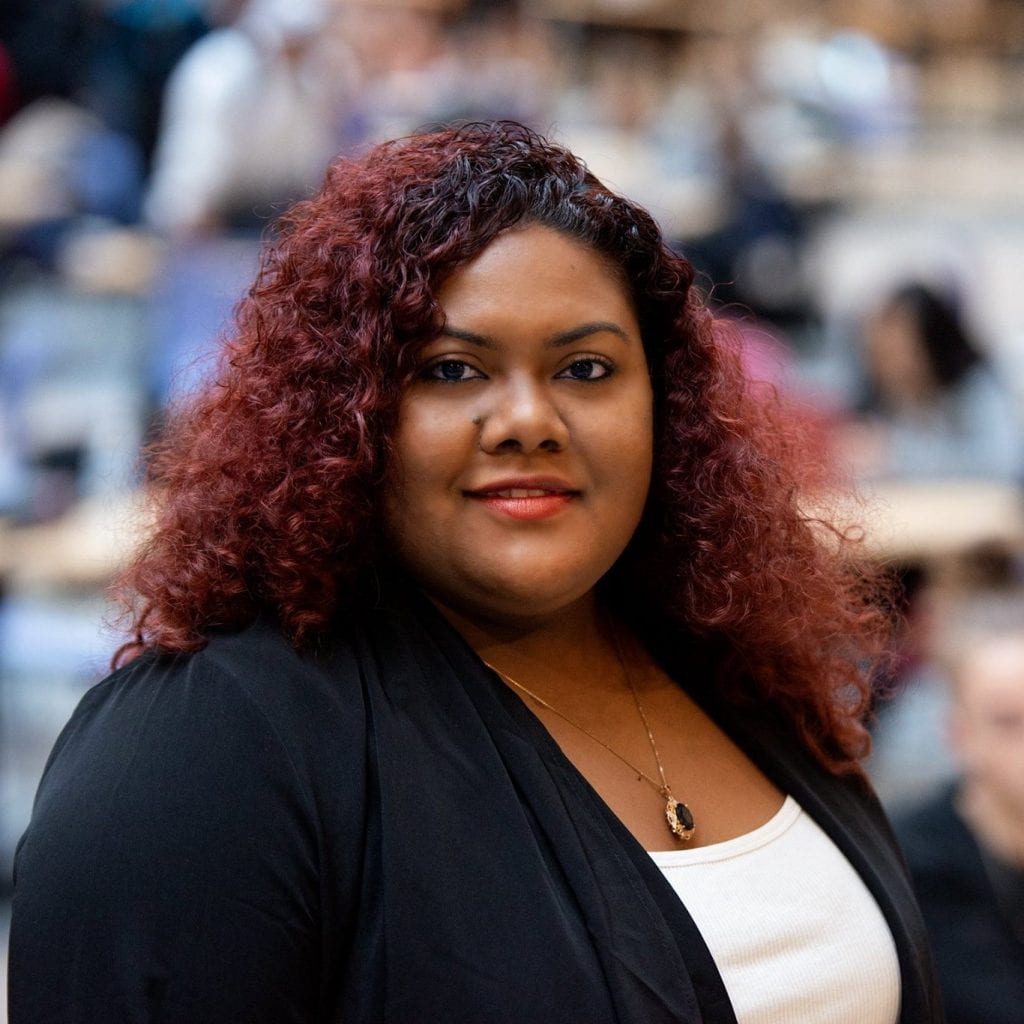
Dr. Ciann L. Wilson is an Associate Professor at Wilfrid Laurier University. Dr. Wilson has extensive experience in consulting, advocacy and community development related to Black and Indigenous health promotion and brings considerable expertise in developing intersectional, anti-racist evaluation frameworks. Dr. Wilson’s interdisciplinary research program addresses the multi-faceted and complex drivers that impact the overall health of racialized and Indigenous communities. Her program consists of community-based research (CBR) projects that utilize evidence-based, art and media-based approaches to elucidate community perspectives on their own health, and engage communities in evidence-based interventions that have local specificity and relevance. Her CBR approach addresses the pressing health and well-being needs of Indigenous, Black, and racialized communities by harnessing the talents, knowledge, and skills of communities, encouraging them to be empowered agents of change and co-producers of knowledge and research that centres their voices, and which is of benefit to their lives.
Image description: A photo from the chest up of a Black woman with long red hair. She is smiling and looking directly at the camera and is wearing a white shirt with a black sweater. The background is slightly out of focus and features other people sitting at desks.
Manoela Dos Anjos Afonso Rodrigues
Art and Decoloniality in the Autobiographical Space
In this paper, I take art practice as an inquiry method for exploring decolonial dimensions of both out-of-place feelings and experiences of not-knowing that may emerge from the autobiographical space. The aim is to discuss autobiogeography as a decolonial methodology for unlearning and undoing the coloniality of being, sensing, and knowing. Artistic strategies created by six undergraduate students of the Federal University of Goias inform the discussions. Their arts-based research projects address race, gender, and coloniality of knowledge, resulting in personal, collaborative, and participative artworks developed through photography, artist’s books, architecture, and socially engaged practices involving graffiti, cyberfeminism, and photo-interviews. Graeme Sullivan’s approach to arts research, Ivan Illich’s notions of conviviality, Paulo Freire’s approach to dialogue, Pablo Helguera’s transpedagogy, Walter Mignolo’s decoloniality, Doreen Massey’s ideas on space and place, Philippe Lejeune’s and Leonor Arfuch’s auto/biographical space, Jennifer Gonzalez’s autotopography, and Conceição Evaristo’s escrevivência inform my analysis. This constellation of concepts supports my reasoning on how powerful the entanglements between autobiographical studies, decoloniality, and visual arts can become in resisting and fighting coloniality in the present neo-colonial times.
Related links:
- Manoela dos Anjos Afonso Rodrigues website
- NuPAA Research group website
- Tecelume On-line Exhibition
- Ebook of the Autobiographical Spaces Project
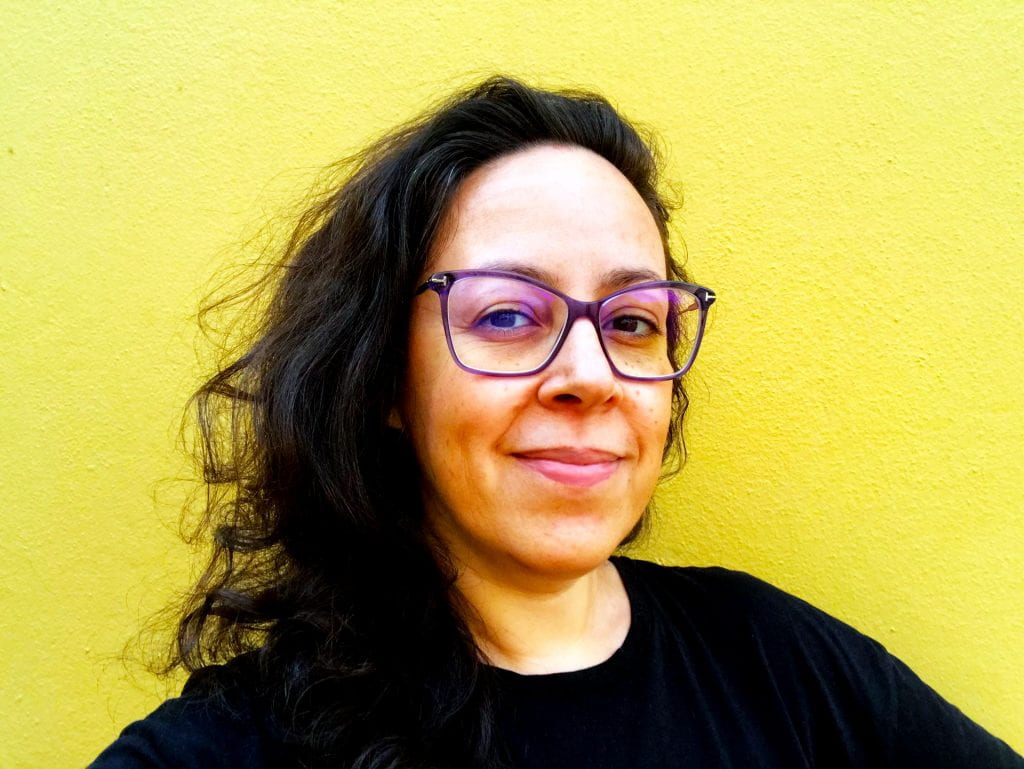
Manoela dos Anjos Afonso Rodrigues (she/her) is an artist, writer, and assistant professor at the Faculty of Visual Arts, Federal University of Goiás, in Brazil. She is also a permanent professor of the Art and Visual Culture Graduate Program at the same institution, conducting and supervising arts-based autobiographical research on the intersections of Visual Arts, Decolonial Studies, and Auto/Biography Studies. She is the founding leader of the Autobiographical Artistic Practices Research Group – NuPAA. Autobiogeography informs her self-positioning strategies for enunciating life stories through art practices that question notions of space, place, territory, and autobiography.
Image description: A woman, with long black hair, black-rim glasses, and a black shirt, smiles at the camera. She stands in front of a bright yellow wall.
May Friedman, Ben Barry, and Calla Evans
Sizing Up Gender: Gender, Weight and Representation
The thorny landscapes of gender identity and fatness resist traditional models of categorization. In this chapter we consider the ways that story acts as theory, foregrounding the lessons gained from first person narratives of participants in our pilot study. Participants’ relationships to meaningful garments or objects are juxtaposed with photographs that convey the item/garment in both representational formats as well as through the use of macrophotography that conveys the item in a non-narrative or surreal way. We explore the impacts of inclusion and diversity; the tensions of co-creation and power; and the layers of structural and contextual factors which thread through each story. As a result, this research interrogates the limitations of conventional research: story and photography are not offered as a means of defining a landscape but rather in order to establish dialogue and contribute to an unspooling mosaic of language and imagery relating to social justice.
Related links:
- Sizing Up Gender: Intersectional Narratives of Fat and Gender through Fashion
- Image-Makers in Residence: Sizing Up Gender
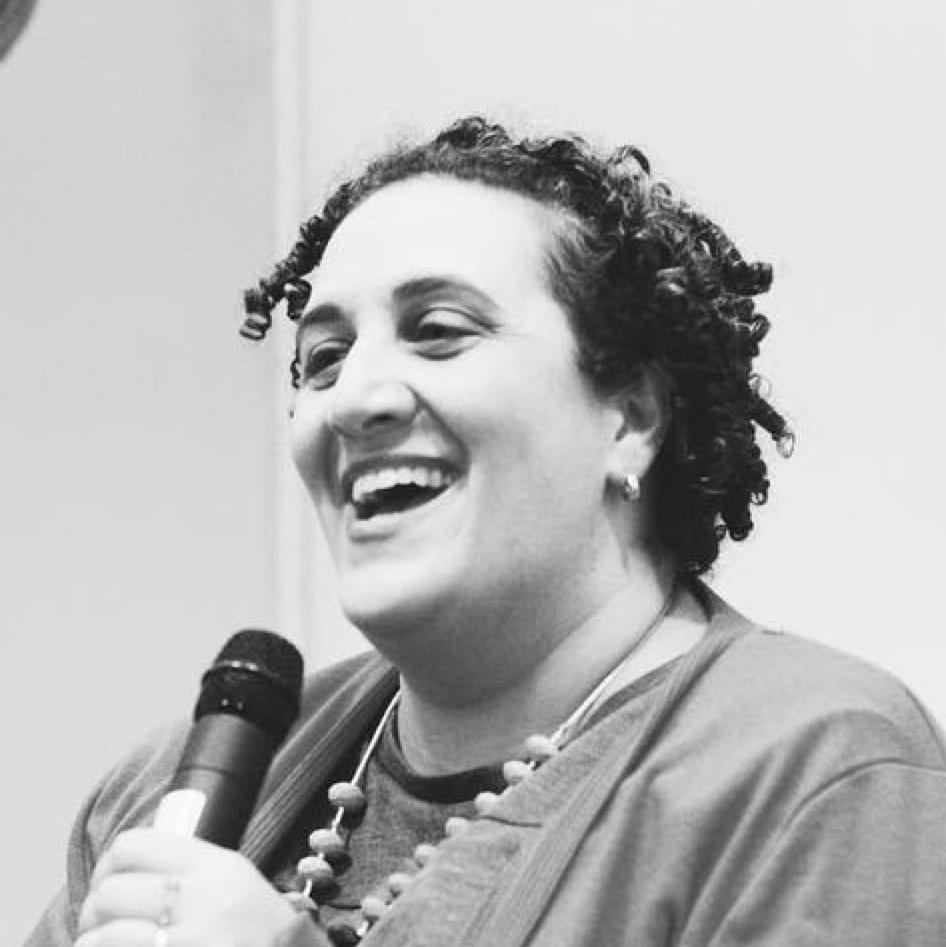
May Friedman’s (she/her) research looks at unstable identities, including bodies that do not conform to traditional racial and national or aesthetic lines. Most recently much of May’s research has focused on intersectional approaches to fat studies considering the multiple and fluid experiences of both fat oppression and fat activism.
Image description: A black and white photo of May, a brown woman. She is wearing a soft cardigan, chunky necklace, earrings, and has short black curly hair. She is smiling widely while speaking into a microphone.
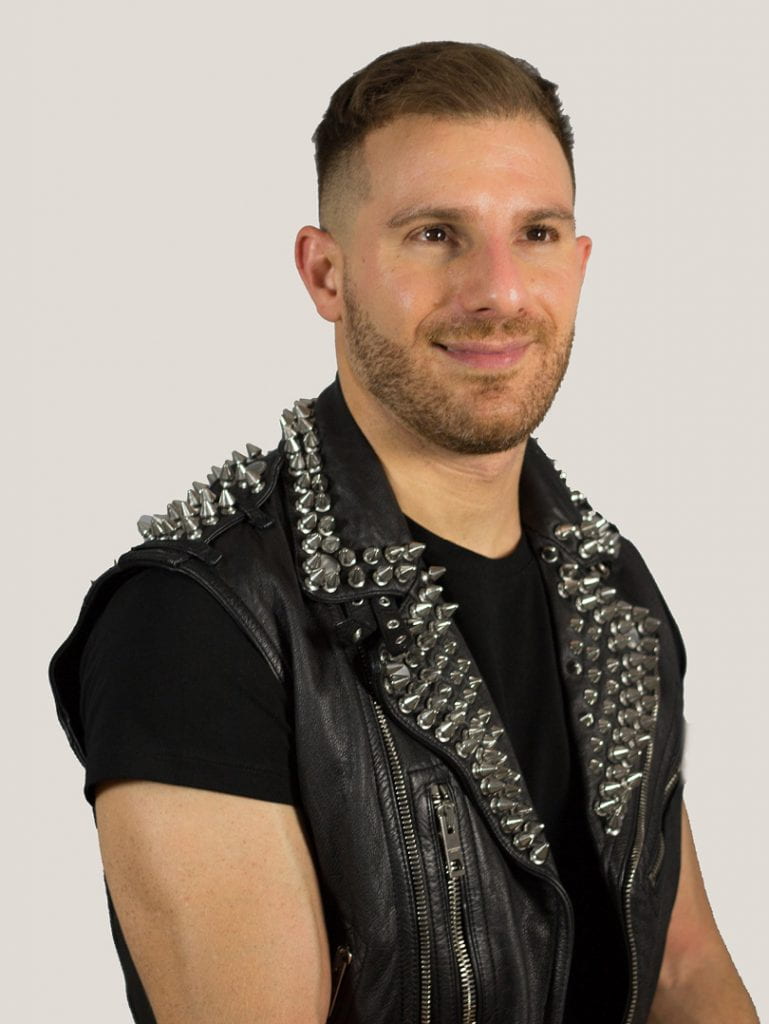
Ben Barry’s (he/him) research centers the intersectional fashion experiences of disabled, fat, trans and queer people and engages them in the design of clothing, media and fashion systems. He is currently Dean of Fashion and Visiting Associate Professor of Equity and Inclusion at Parsons School of Design, New School University.
Image description: A headshot by Akash Rai of Ben Barry, a white queer man with low vision. He is wearing a studded black leather vest over a black t-shirt, looking past the camera with a slight smile.
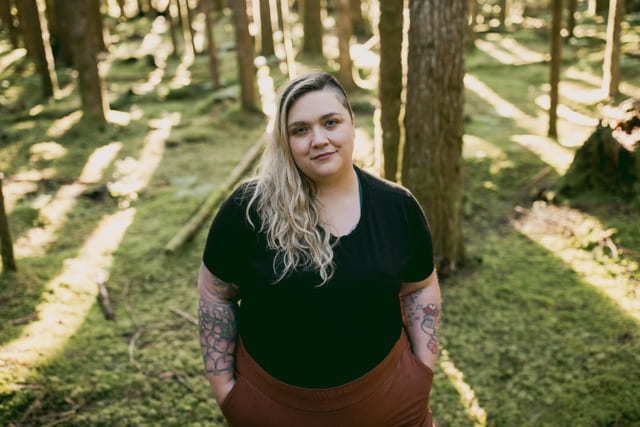
Calla Evans’s (she/her) research explores visual social media platforms, embodied identity performance and fat activism. She is a research associate at the Centre for Fashion & Systemic Change and the Creative Communities in Collaboration research lab. She is also a digital storytelling facilitator at Re•Vision: The Centre for Art & Social Justice and a celebrated lifestyle and documentary photographer.
Image description: An image of Calla from the waist up. She is standing in a forest with green moss visible on the ground. There are out of focus tree trunks behind her with light streaming in. She is wearing rust coloured pants and a black short-sleeved t-shirt, she has many colourful tattoos visible on her arms. She has white skin, blue eyes and dark blond hair that spills over her shoulder. A portion of her hair on the left side of her face is shaved. She is looking directly into the camera with a slight smile.
Miranda Campbell, Calla Evans, and Johannes Valdes
“Self in Response”: Reflections on a Collaborative Youth Arts Workshop Facilitation as Research Site
Though the creative industries labour market is growing and youth increasingly desire to enter this field, creative industries employment is challenging and diversity in this sector is lacking. Simultaneously, the rise of “communities of care” (Campbell, 2018) demonstrates a shift toward a collective impulse and suggests the resilience of alternative formations of social enterprise within the broader neoliberal uptake of the creative industries as an economic driver. This paper highlights the role of community youth arts programs in fostering community-based and social values alongside entrepreneurial capacity.
This paper focuses on the final phase of the Community Youth Arts Programs as Creative Industries Incubators research project, titled “Self in Response,” held at Ryerson University, with eight community artists over eight weeks, culminating in a final art exhibit at Ryerson University’s Student Learning Centre. Through arts-based methods (ABR) and participatory action research (PAR), the “Self in Response” program was designed to co-create new knowledge about cultural entrepreneurship, mobilizing communities of care methodology that foregrounds co-creation and sharing of knowledge and resources. Through the eight-week program, topics and activities were organized around best practices in the following areas: collaboration, curation, accessibility, and promotion and documentation. Along with the final exhibit, participants produced a video that showcased behind-the-scenes footage of their artistic practices leading up to the final event. This paper discusses the potentials and challenges of working with ABR and PAR while remaining in an institutional academic setting. During the eight-week program, community artists expressed excitement for the exhibition and the personal and collaborative goals they were able to meet through the program. The program opened a space for resource sharing and mutual support, however, the facilitators and participants also faced challenges around the co-creation methodology of the program, and the program largely remained led by the academic research team. Furthermore, persistent economic realities and challenges impacted community artist program participants’ capacity to engage in the program, raising questions about barriers to access and equitable participation in a co-creation framework. Through analysis of reflections from the research team and reflective journal responses from program participants, in addition to a discussion of the art and video produced by participants, this paper will explore avenues for future collaborative and creative research design within academic institutions, while acknowledging the challenges of such work at structural and interpersonal levels.
Related link:
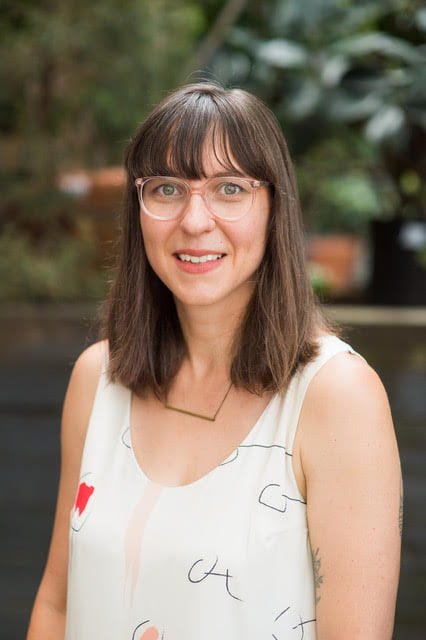
Miranda Campbell is an Associate Professor in the School of Creative Industries at Ryerson University in Toronto, Canada. Her research focuses on creative employment, youth culture, and small-scale and emerging forms of creative practice. She is the author of Reimagining the Creative Industries: Youth Creative Work, Communities of Care (Routledge, 2022) and How to Care More: Seven Skills for Personal and Social Change (Rowman & Littlefield, 2022). Her book, Out of the Basement: Youth Cultural Production in Practice and in Policy (McGill Queen’s University Press, 2013) was shortlisted for the Donner Prize for the best public policy book by a Canadian. Her involvement with creative communities includes coordination and Board of Director roles with Rock Camp for Girls Montreal, a summer camp dedicated to empowerment for girls through music education, and with WhipperSnapper Gallery, an artist-run centre focusing on emerging artists in Toronto.
Image description: Miranda Campbell, a white woman wearing pink glasses, smiles towards the camera. She is outside in front of some plants.

Calla Evans’s (she/her) research explores visual social media platforms, embodied identity performance and fat activism. She is a research associate at the Centre for Fashion & Systemic Change and the Creative Communities in Collaboration research lab. She is also a digital storytelling facilitator at Re•Vision: The Centre for Art & Social Justice and a celebrated lifestyle and documentary photographer.
Image description: An image of Calla from the waist up. She is standing in a forest with green moss visible on the ground. There are out of focus tree trunks behind her with light streaming in. She is wearing rust coloured pants and a black short-sleeved t-shirt, she has many colourful tattoos visible on her arms. She has white skin, blue eyes and dark blond hair that spills over her shoulder. A portion of her hair on the left side of her face is shaved. She is looking directly into the camera with a slight smile.
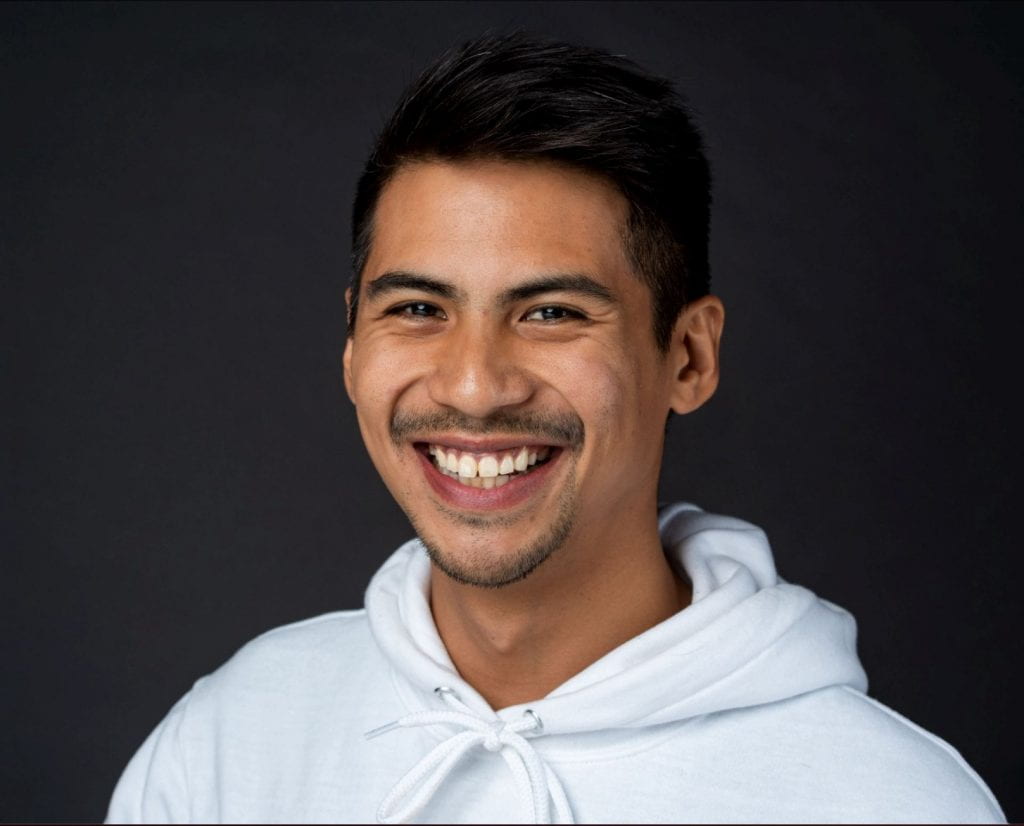
Johannes Valdes grew up in North Vancouver, BC, and has spent the last decade working with children and youth with different capacities and from various cultural backgrounds both in Canada and abroad. His work abroad ranges from youth community arts, monitoring children’s rights clubs, and creating safe spaces for child survivors of abuse. These experiences led him to move to Toronto to pursue a Master’s Degree in Child and Youth Care at Ryerson University. It was at this moment that he joined Miranda and Calla to conduct participatory research on urban youth arts initiatives, the experiences of underserved young people, and the community spaces that impact them in meaningful ways. Today, Johannes is working in social impact to reduce barriers for BIPOC youth in STEM and entrepreneurship. He is an advocate for building relationships and co-creating opportunities for underserved populations.
Image description: A tan-skinned man with a bit of facial hair and short hair styled up. He smiles at the camera and is wearing a white hoodie in front of a black background.
Nadine Changfoot, Carla Rice, Eliza Chandler, and Susan Dion
Rethinking Intersectionality in Complex Body Becomings of New Materialities: What Artistic Creative Accounts Offer Us
This paper examines the challenges and possibilities of mobilizing intersectionality as a theoretical and methodological construct throughout our collaborative, arts-based research program. Bodies in Translation: Activist Art, Technology, and Access to Life is a SSHRC Partnership Grant that cultivates disabled, d/Deaf, fat, Mad, and aging arts using a decolonizing lens through engaging with 70+ community and institutional partners and collaborators. The multiple creative, boundary-pushing, and field-expanding artistic activities/scholarly outputs that have emerged through our generative project partnerships have called us to interrogate the intersections among diverse scholarly fields and justice-seeking communities, including the aging/disability nexus; the decolonizing of disability studies; and the thickening of fat studies scholarship. Reviewing relevant debates within the intersectionality literature, we reflect on how we enact intersectionality as an active, integral part of our research process. We assert that thinking through art enables us to rethink intersectionality in productive ways, ways that bring into visibility the relationalities of persons’ bodies, selves and worlds which are in confrontation and confluence. Creative accounts of complex embodiment and of land-based concepts of self and sociality, for example in the work of such artists such as Lara Kramer (Oji-Cree), Valentin Brown, Steven Surlin, and Gloria Swain press the field of intersectionality studies to consider new ways of conceptualizing intersectionality to account for the complexity of embodied and embedded being in their diverse and divergent materializations in ways that generatively “exceed[s] intersectionality” (Nash, 2019).
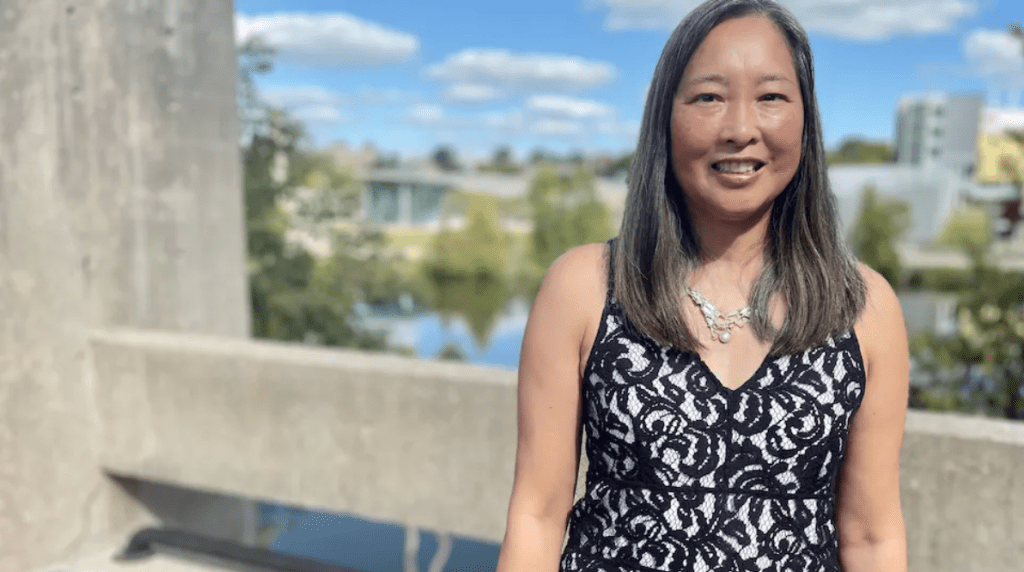
Dr. Nadine Changfoot is Associate Professor in Political Studies, Executive Member of the Trent Centre for Aging and Society and Teaching Fellow at Trent University, Senior Research Associate with Re•Vision: The Centre of Art and Social Justice, Research lead of Aging Vitalities, Management Team Member of the research partnership Bodies in Translation: Activist Art, Technology and Access to Life, and Executive Member of EC3, the Peterborough Arts & Culture Council). She engages in feminist, participatory and arts-based research, partnering with arts, environmental, disability, aging, healthcare, and Nishinaabeg communities for influence, capacity-building, and new possibilities. She has received awards for research, teaching and leadership and published widely in journals of philosophy, political science, disability, aging, health, engaged scholarship, methodology, community development, and social justice. An activist artist-scholar, she creates for self-expression and to make space for brave conversations, reimagining disability and aging with a decolonizing lens. She has guest edited with the Michigan Journal of Community Service Learning and currently doing so with the Journal of Aging Studies and Social Sciences.
Image description: Nadine has long black hair with silver highlights and is wearing a black lace sleeveless top and silver necklace on a sunny day. She is smiling. The Trent Faryon Bridge is in the background.

Dr. Carla Rice is Professor and Canada Research Chair at the University of Guelph, specializing in disability and embodiment studies and in unconventional and creative research methodologies. In 2012, she founded the Re•Vision: The Centre for Art and Social Justice as an arts-informed research centre with a mandate to foster inclusive communities and social well-being. She is Principal Investigator of Bodies in Translation: Activist Art, Technology and Access to Life, a multi-year, multi-site disability and non-normative arts grant that she co-directs with Dr. Eliza Chandler. She has received awards for advocacy, research, and mentorship has published on embodied difference, non-normative cultures, and practices of accessibility and inclusion. Published books include Gender and Women’s Studies: Critical Terrain (with Marg Hobbs, 2nd Edition, 2018); Becoming Women: The Embodied Self in Image Culture (2014); The Aging/Disability Nexus (with Katie Aubrecht and Christine Kelly, 2020); and Thickening Fat: Fat Bodies, Intersectionality and Social Justice (with May Friedman and Jen Rinaldi, 2020).
Image description: She/they is/are looking at the camera and smiling while wearing necklaces, red lipstick, and a bright red jacket. She/they are white and have long, curly blond hair.

Dr. Eliza Chandler is Assistant Professor in the School of Disability Studies at X University, wherein she teaches courses on disability arts and culture, cultural representations of disability, leadership and community building, and intersectional activist movements. Earning her PhD from the Social Justice and Education department at the University of Toronto in 2014, Chandler was dually appointed as the artistic director at Tangled Art + Disability, an organization in Toronto dedicated to the cultivation of disability arts, and the postdoctoral research fellow in X University’s School of Disability Studies from 2014-2016. During this time, she was the also the founding artistic director of Tangled Art Gallery, Canada’s first art gallery dedicated to showcasing disability art and advancing accessible curatorial practice. Chandler is also the co-director of a Social Sciences and Humanities Research Council (SSHRC)-funded partnership project, Bodies in Translation: Activist Art, Technology and Access to Life, a seven-year research project that interrogates the close relationship between activist art and the achievement of social justice. She is also the director of a SSHRC Insight Development Grant that explores how accessibility practices that are led by disabled people and our politics change how we create and interact with arts and culture. Chandler is a practicing curator and regularly gives lectures, interviews, and consultations related to disability arts, accessible curatorial practices, and disability politics in Canada.
Image description: Eliza, a white physically disabled woman, stands on a path in a park surrounded by trees. She is wearing a white shirt and black sweater and she is smiling at the camera.
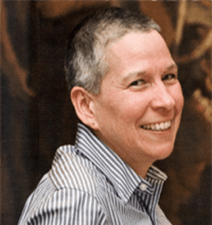
Dr. Susan D. Dion (Potawatomi-Lenapé) is the inaugural Associate Vice-President of Indigenous Initiatives and Professor of Education at York University. Dion specializes on issues related to Indigenous matters in education and the role of Indigenous relationships in teacher education. Dion has expertise in both the education of teachers on issues such as reconciliation between Indigenous and non-Indigenous peoples in Canada in relation to the legacy of residential schools in Canada, and the ways these issues should be taught in primary and secondary school classrooms. She is frequently consulted as an expert on Indigenous issues in education in the news media, speaker, and in other community contexts. Dion has collaborated with the Toronto District School Board Indigenous Education Centre on matters such as a First Nations school and a variety of curriculum initiatives. Dion worked with the Ontario Ministry of Education on the “Urban Aboriginal Education Pilot Project.” Dion has particular expertise in collaborative inquiry, a methodology focused on a reflective practice. She has used this methodology in research and practical applications. The “Listening Stone” project focused on collaborative inquiry and First Nation, Métis and Inuit educational initiatives within the Ontario Ministry of Education school boards. Dion’s work with the TDSB and other initiatives on the decolonization of school curriculum has had wide impact on research and practical application of decolonization and indigenization methods within education. Her work with non-Indigenous teachers exploring blockages to incorporating Indigenous-related teaching and issues into the curriculum has also had impact.
Image description: Photo of Susan Dion, in 3/4 profile, smiling and wearing a blue and white striped collared shirt.
Patty Douglas, Carla Rice, Katherine Runswick-Cole, Meg Gibson, and Raya Shields
Re•storying Autism by Attending to the ‘Methodologically Unexpected’: A Research Creation Approach
This chapter offers an overview of the Re•Storying Autism in Education project, a community-engaged, arts-based international research collaboration led by Patty Douglas (Brandon University) in affiliation with the Re•vision Centre for Art and Social Justice (University of Guelph), founded and directed by Carla Rice. The project brings together educators, practitioners, researchers, artists, family members and people who have attracted the label of autism in multimedia storytelling workshops to artistically self-represent their/our experiences of school; critically and creatively build alliances; and cultivate practices that (re)make education in justice facing ways (Douglas et al. 2021; Rice and Mündel 2018, 2019). We assert on the project “the need for schools to change their cultures and practices” (Runswick-Cole 2011, 113) and be affected and effected by the perspectives and experiences of non-normatively embodied students. Our project shows how the perspectives of autistic and neurodivergent people remain absent from educational research on disability (Douglas et al., 2021) and that stark educational exclusion persists daily for autistic students, including: misunderstanding and stigma, bullying and other ableist violence such as restraint, school exclusion and seclusion; educational trauma, and significant barriers to accessing learning and life particularly for Indigenous, Black, queer, Trans and other multiply marginalized autistic students (ibid.). Indeed, despite international, federal and provincial/territorial legislation around inclusion and access, a persistent gap remains between policy and practice (OHCHR 2019).
Re•Storying Autism addresses this gap. Creative research has the power to move hearts, minds and imaginations in ways that can transform relationships with difference, ourselves, each other and the world (Finley 2014). At the core of the project are world un/re/making experiments in multimedia story-making methodology (Rice & Mündel 2018, 2019)—investigations in collaborative, radically inclusive, creative research praxis where diverse storyteller-participants are offered technical, artistic and other supports to make first-person stories that often speak back to deficit-oriented systems. Following a brief overview, the chapter presents and analyzes several short videos and zines produced in our workshops. We pay particular attention to the ‘methodologically unexpected’ in the creative storytelling process as sites of un/re/making worlds and cultivating new, nourishing and inclusive research and education practice. What might be learned, for example, when we attend to the non-human in artist-storyteller depictions such as dustbins, cats or stim objects and to how they become actors that open new and radical possibilities for the meaning of access, inclusion and ‘autism’? This approach to story-making embraces a post-structuralist politics of critique that interrogates how autism is constituted as deficiency and a new materialist politics of possibility that interrogates how we might re-story autism in less problem-saturated ways (Douglas et al. 2021; Rice 2018). Attending to the methodologically unexpected leads us as arts-based researchers to deeper ethical, epistemological, ontological and political questions about identity, relationality, power, bodies, art and social justice in support of systemic and cultural change. Such methodological engagements are particularly pressing in our time of health crisis, neoliberal and colonial capitalist logics, and intensifying violence toward ‘difference’ both within and beyond schools.
Related links:
Re•Storying Autism is a multimedia storytelling project that brings together autistic people, family members, practitioners, educators and artists in education and health care systems to rethink practice in ways that desire the difference of autism and disability justice. You can view creative outputs (videos, zines) from the project here:
- Re•Storying Autism on Screen: Autistic, Family, & Practitioner Perspectives
- Re•Storying Autism zine making workshop
We are thrilled to have new research collaborations in Aotearoa (New Zealand) decolonizing stories of autism/takiwātanga (Māori word for autism meaning ‘in our/their own space and time’) and amplifying Indigenous perspectives. With Re•Vision, we held a 3-day online storytelling workshop this past June 2021. The workshop brought together Indigenous and settler participants, researchers and facilitators from Aotearoa, Turtle Island and the UK. We are currently planning what’s next for these videos including co-publishing and community events in Aotearoa. Here are a few sample of videos from our newest international collaboration:
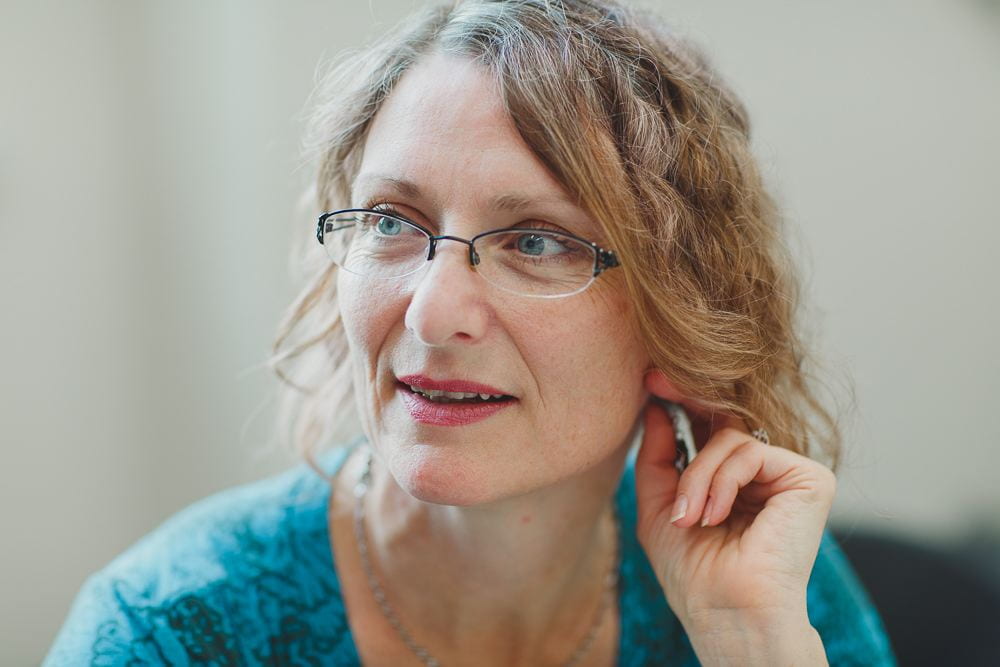
Patty Douglas is an Associate Professor of Disability Studies and Inclusive Education in the Faculty of Education at Brandon University. Her work in disability studies, critical autism studies, radical care and mothering concentrates on critical and creative methodologies and research supported by feminist, decolonial, post-humanist, cultural studies and other critical approaches that dislodge the (humanist) human in educational research and practice. Douglas leads the Re•Storying Autism project, a SSHRC funded international, multimedia story-making project that pushes back against deficit understandings of difference and proliferates new love stories of autism to transform policy and practice. She is currently finishing her first monograph, (Un)Mothering Autism: Ethical Disruptions and Care Pedagogies. Douglas is a former special education teacher and the mother of two neurodivergent sons, one of whom attracted the label of autism. She identifies as multiply neurodivergent and invisibly disabled. For more information visit www.restoryingautism.com. @ReStorying
Image description: A head shot of a middle-aged woman with curly brown hair and glasses with her head turned to the right. She is wearing a turquoise top and her left hand is placed on the earring on her left ear.

Dr. Carla Rice is Professor and Canada Research Chair at the University of Guelph, specializing in disability and embodiment studies and in unconventional and creative research methodologies. In 2012, she founded the Re•Vision: The Centre for Art and Social Justice as an arts-informed research centre with a mandate to foster inclusive communities and social well-being. She is Principal Investigator of Bodies in Translation: Activist Art, Technology and Access to Life, a multi-year, multi-site disability and non-normative arts grant that she co-directs with Dr. Eliza Chandler. She has received awards for advocacy, research, and mentorship has published on embodied difference, non-normative cultures, and practices of accessibility and inclusion. Published books include Gender and Women’s Studies: Critical Terrain (with Marg Hobbs, 2nd Edition, 2018); Becoming Women: The Embodied Self in Image Culture (2014); The Aging/Disability Nexus (with Katie Aubrecht and Christine Kelly, 2020); and Thickening Fat: Fat Bodies, Intersectionality and Social Justice (with May Friedman and Jen Rinaldi, 2020).
Image description: She/they is/are looking at the camera and smiling while wearing necklaces, red lipstick, and a bright red jacket. She/they are white and have long, curly blond hair.
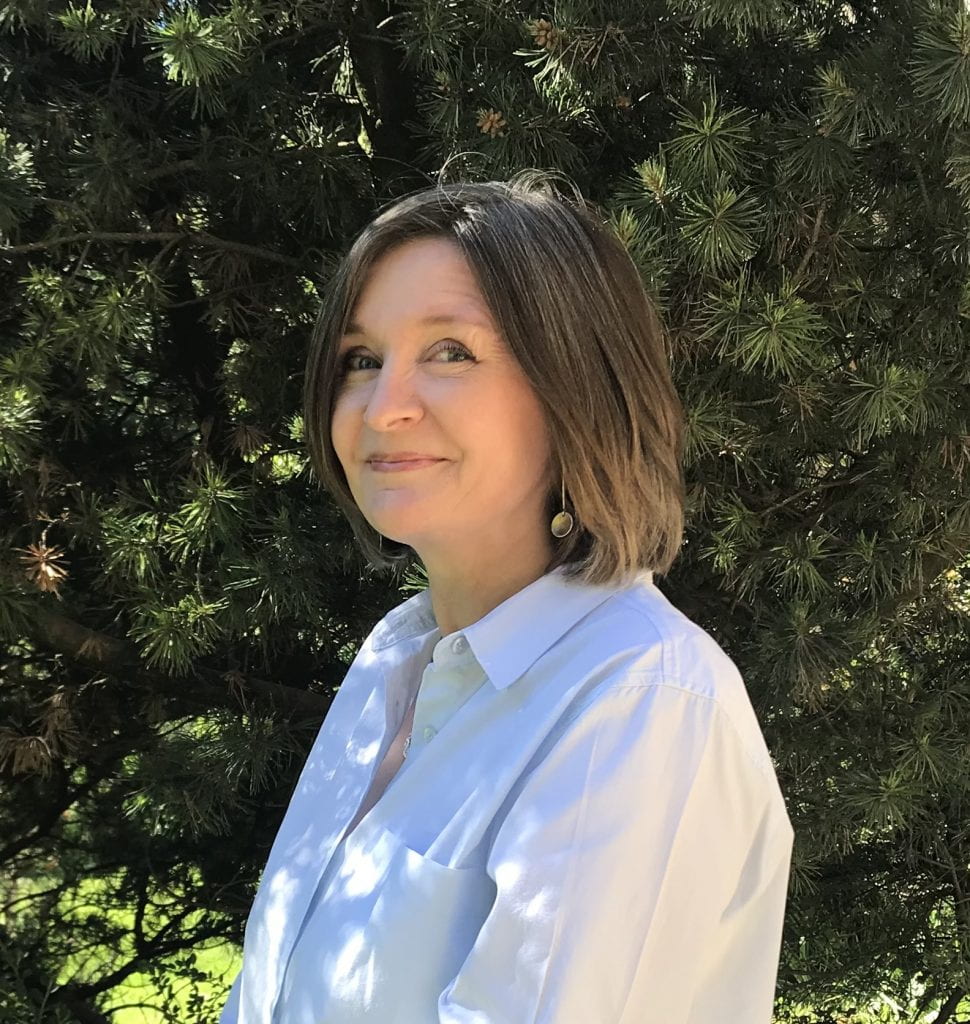
Katherine Runswick-Cole (she/her) is Chair in Education and Director of Research in The School of Education at the University of Sheffield, United Kingdom. Katherine is known for research and publications in the field of critical disability studies. Critical disability studies aim to understand and challenge exclusionary and oppressive practices associated with disablism and consider the ways these intersect with other forms of marginalisation including hetero/sexism, racism, poverty and imperialism. Katherine draws on ideas from critical psychology, sociology and education and makes use of narrative, arts-informed and participatory methodologies.
Image description: Photograph of the head and shoulders of a woman standing in front of the leaves of a dark green tree. She has collar length hair and is wearing a blue shirt. She is looking towards the camera and smiling.
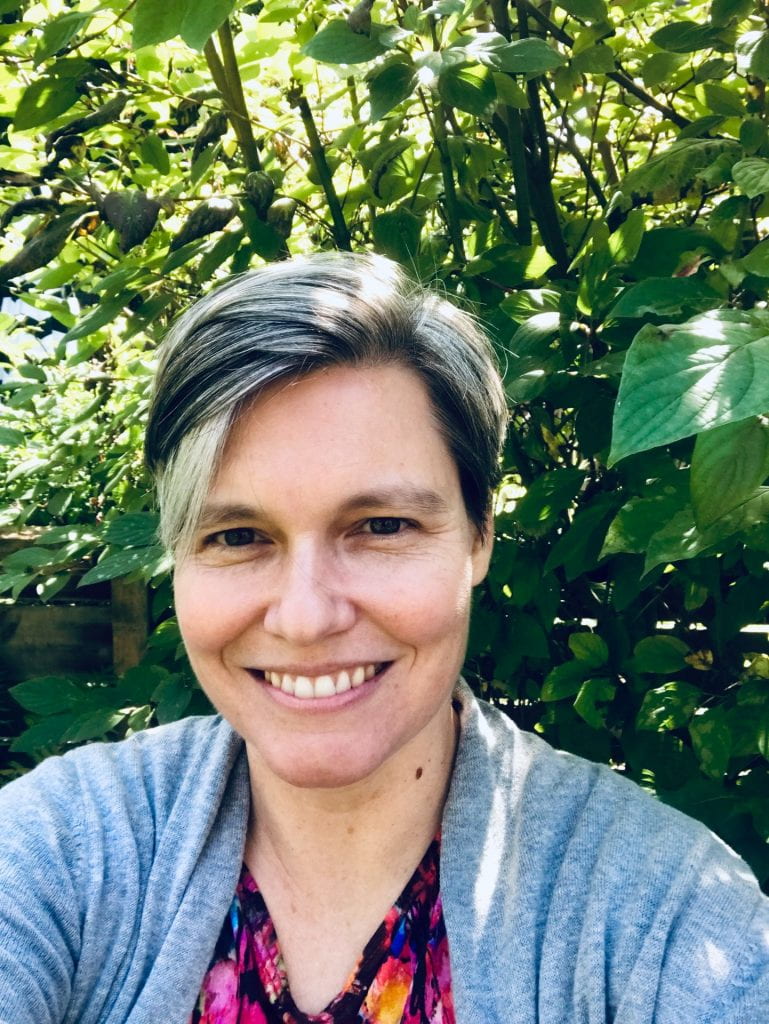
Margaret F. (Meg) Gibson is an assistant professor in social work and social development studies at Renison University College, University of Waterloo, Canada. Her scholarship focuses on 2SLGBTQI+ parenting, disability studies, social services, and feminist research methods. Meg was the collection editor for Queering Motherhood: Narrative and Theoretical Perspectives (Demeter Press, 2014), and she is currently leading a project about neurodiversity in practice, family, and identity. She enjoys spending time with her wife, two teens, tuxedo cat, and puggle.
Image description: A photo of a white woman with short, gray and brown hair who is looking at the camera and smiling. She is wearing a gray sweater and is standing in front of a leafy green background.

Raya Shields has a B.A in Child and Youth Care and an M.A in Critical Disability Studies. She currently lives in Tkaronto where she works as an educational assistant at a small private school. Raya is passionate about funicular railways and vintage washing machines.
Image description: The image is a selfie of a white person with blue eyes. She is wearing a purple toque with a hedge hog on it and a cloth face mask covered in colourful monsters. She is sitting against a tree and is wearing a pink sweater with a white ghost on it.
Peter Morin and Emma Lind
Art of Relationship: Reflections on Healing, Friendship, Reconciliation & Resilience
In “The Art of Relationship,” Tahltan Nation Performance Artist Peter Morin and fourth generation Anglo-Settler Gender Studies Professor Emma Lind situate their friendship as a site of transdisciplinary collaboration unsupported by institutional structures. Morin and Lind argue that their relationship impacts their respective artistic practices, which then inform who they are and continue to become in relation to each other. This chapter interrogates the affective spaces in which the social is practiced, inviting friendship to be considered as a productive and dynamic site of settler-indigenous reconciliation, healing, and futurity. In this chapter, we theorize relationships as a constitutive element of research creation that is critically necessary to the production of the resistance arts. By situating ourselves as cultural producers who inform each other’s artistic practice, we work to expand the conventional frame of reference used to identify efforts at reconciliation.
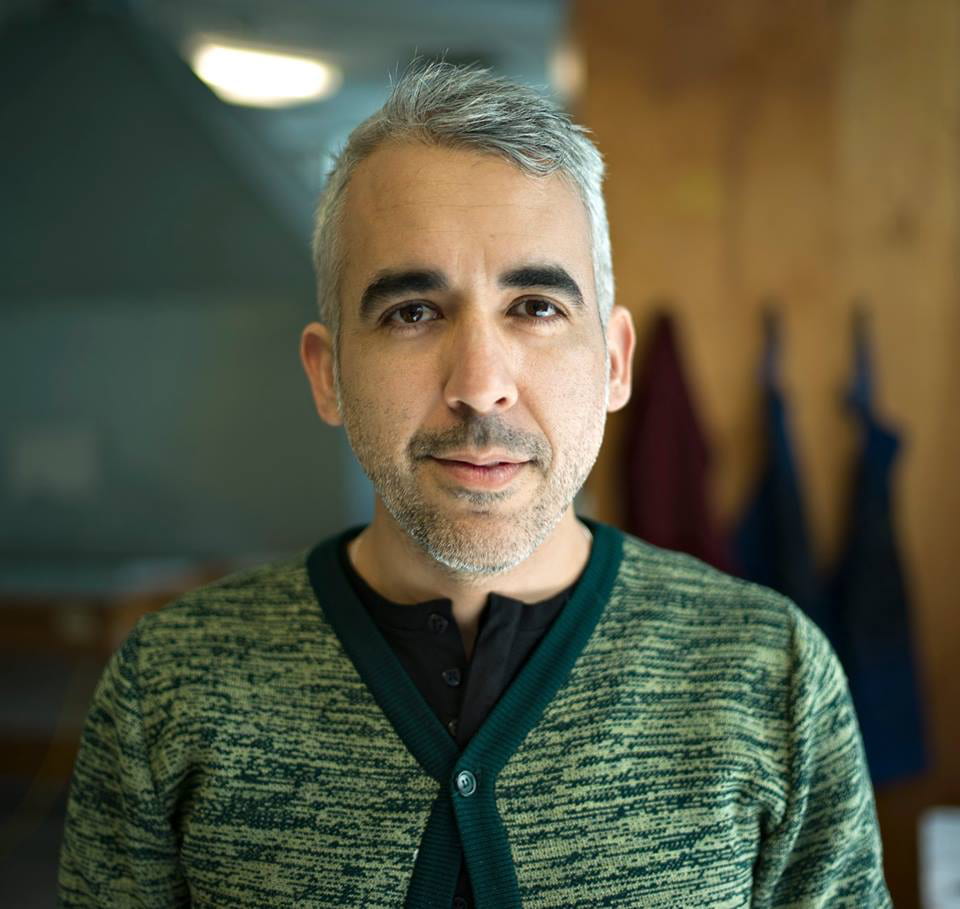
Peter Morin is a grandson of Tahltan Ancestor Artists. Morin’s artistic offerings can be organized around four themes: articulating Land/Knowing, articulating Indigenous Grief/Loss, articulating Community Knowing, and understanding the Creative Agency/Power of the Indigenous body. The work takes place in galleries, in community, in collaboration, and on the land. All of the work is informed by dreams, Ancestors, Family members, and performance art as a research methodology. Morin began art school in 1997, completing his Bachelor of Fine Arts at Emily Carr Institute of Art and Design in Vancouver in 2001 and his Masters in Fine Arts in 2010 at the University of British Columbia-Okanagan. Initially trained in lithography, Morin’s artistic practice moves from printmaking to poetry to installation to performance art. Morin’s first performance ‘I grieve too much’ took place at the Museum of Anthropology in 2005. Peter is the son of Janelle Morin (Crow Clan, Tahltan Nation) and Pierre Morin (Quebecois). Throughout his exhibition and making history, Morin has focused upon his matrilineal inheritances in homage to the matriarchal structuring of the Tahltan Nation, and prioritizes Cross-Ancestral collaborations. Morin was longlisted for the Brink and Sobey Awards, in 2013 and 2014, respectively. In 2016, Morin received the Hnatyshyn Foundation Award for Outstanding Achievement by a Canadian Mid-Career Artist. Morin currently holds a tenured appointment in the Faculty of Arts at the Ontario College of Art and Design University in Toronto, and is the Graduate Program Director of the Interdisciplinary Master’s in Art, Media and Design program at OCADU.
Photo credit: Greg Staats
Image description: Peter is looking directly into the camera with an inquisitive expression. He has short grey hair, closely cropped, black eyebrows, and a light grey facial hair. He is wearing a green cardigan and he is standing in an art studio, in front of a blurred background.
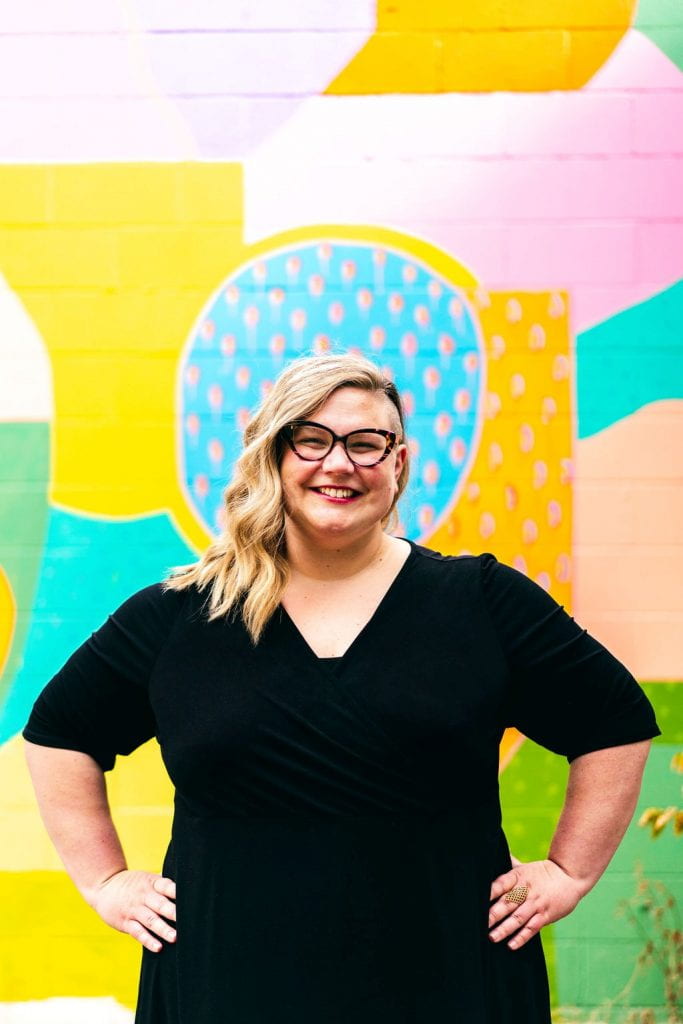
Emma Lind (she/her) is a Professor of Gender, Sexuality, and Women’s Studies at Okanagan College. Her research focuses on the intersections of embodiment, materiality, identity, with a particular focus on how power normalizes itself in ways of knowing. She has published in the fields of Fat Studies, Motherhood Studies, and recently completed her doctoral dissertation on white settler colonial identity in urban space.
Image description: Emma stands with her hands on her hips in front of a multicolour mural. She is wearing glasses, a fabulous grin, and is looking directly at the camera.
Petra Kuppers
Eco Soma Performances: Turtle Disco
Eco Soma: creative flights of connection that combine bodily, emotional, and imaginative responses. This report engages issues of community, bodily pain, and writing in the context of group somatic experiences. I will articulate eco soma methods, ways of writing/creating at the site of somatic experience in embedded webs. I will report from Turtle Disco, a small disability-led arts space in Ypsilanti, Michigan, USA. I co-direct Turtle Disco with my wife, Stephanie Heit, a psychiatric system survivor, dancer and poet, in the refunctioned living room of our home, where we curate somatic experiments with fellow queer/crip local folx.
Related links:
First Starship Journey (sound file)
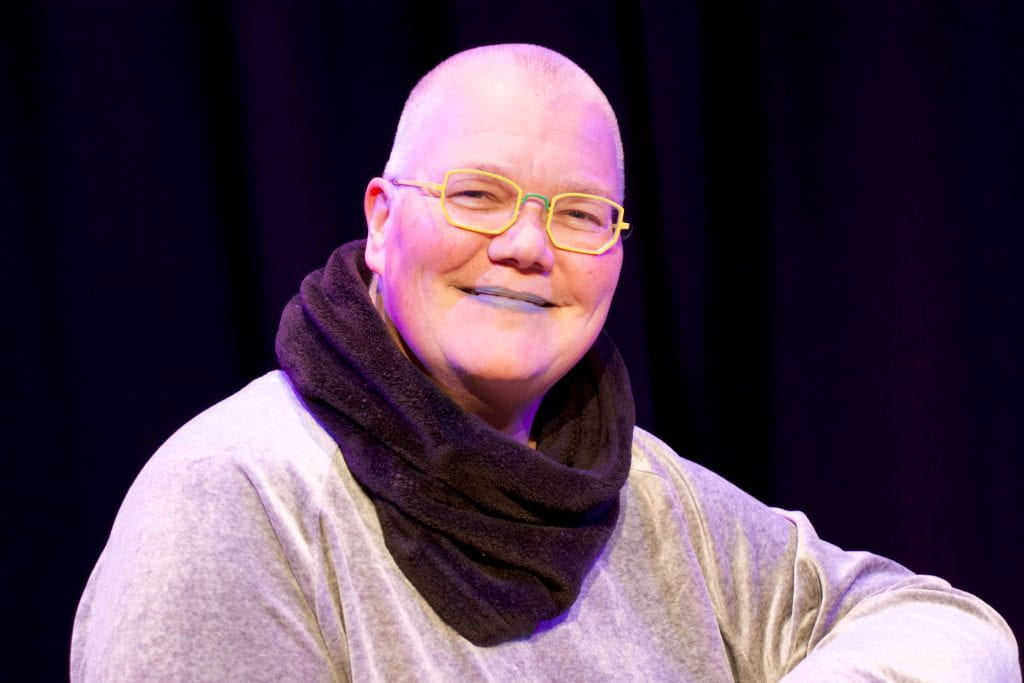
Petra Kuppers (she/her) is a disability culture activist, a wheelchair user, and a community performance artist. Petra grew up in Germany, and grounds herself in disability culture methods. She uses ecosomatics, performance, and speculative writing to engage audiences toward more socially just and enjoyable futures. She teaches at the University of Michigan in performance studies and disability culture, and is also an advisor on the low-residency MFA in Interdisciplinary Arts at Goddard College. She is the Artistic Director of The Olimpias, an international disability culture collective, and co-creates Turtle Disco, a somatic writing studio, with her wife, poet and dancer Stephanie Heit, from their home on Three Fire Confederacy land, in Ypsilanti, Michigan. Her next academic book is Eco Soma: Pain and Joy in Speculative Performance Encounters, University of Minnesota Press, February 2022.
Image description: A large white cis queer disabled woman with a shaved head, yellow glasses, a smile, clad in grey velvet.
Romana B. Mirza
Detangling Embodiment and Difference
This chapter will address the question, what do arts-based methodologies contribute in times of extreme political polarization, racism, conflict, violence and trauma? Both in the United States and Canada extreme political polarization is happening in part because the majority of people are not able to fully comprehend the lived experiences of marginalized communities. Creating alternative ways of knowing through arts-based methods can contribute to understanding the embodied realities of those who are targeted by divisiveness, marginalization, and hate. This chapter will be an analysis of the digital stories created in the workshop that I led as part of my research project “Women Undercover: Exploring the Intersectional Identities of Muslim Women through Modest Fashion.” This will include my observations of working with participants to host the workshop and create the stories. I will also include a reflexive analysis of my own digital story created in the Re●Vision workshop in April 2018.
Related links:
- Underneath This Hijab (video)
- Beyond The Cover (video)
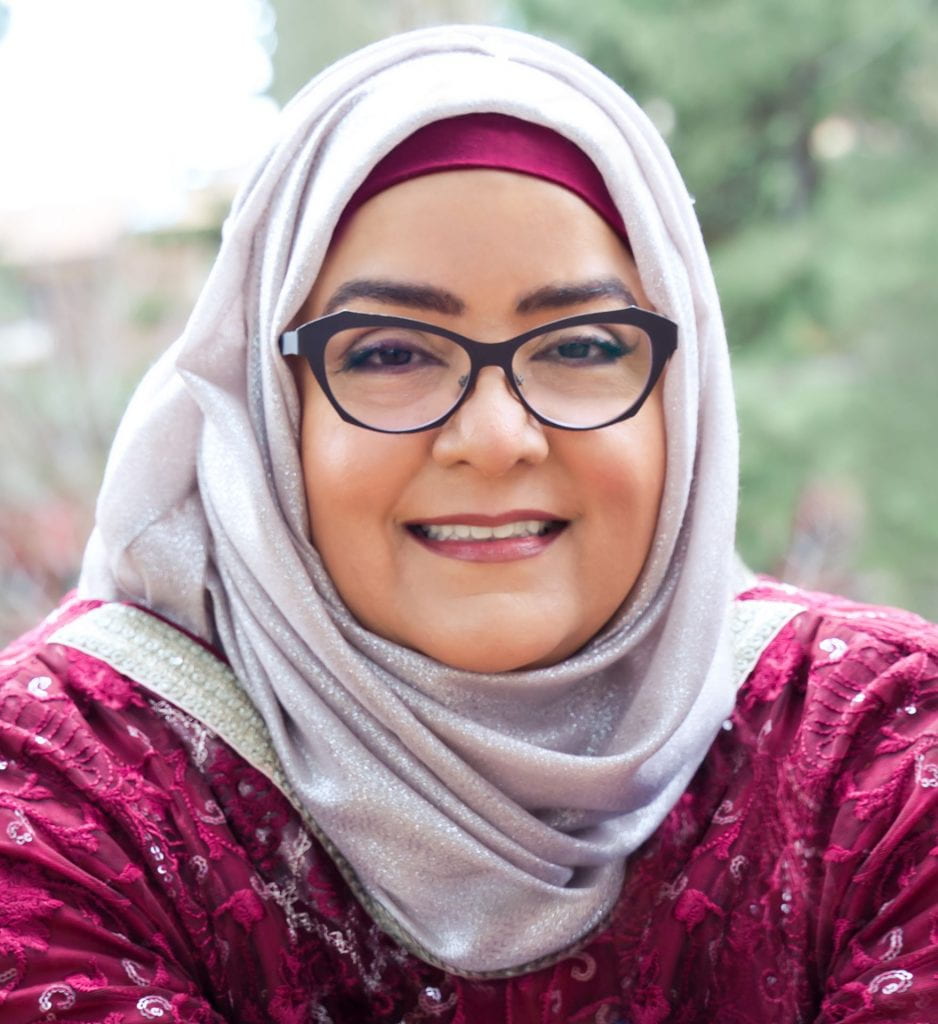
Romana Mirza is a brand strategist, researcher, and scholar. She brings over 25 years’ experience in creative industries to her scholarship and research in Fashion Studies. Romana’s research project “Women Undercover: Exploring the Intersectional Identities of Muslim Women through Modest Fashion” studied the sartorial practices of Muslim women. Centering intersectionality in this project, Romana’s goal was to break down growing resentment toward Muslims and the resurgence of society’s need to legislate women’s bodies. This research project introduces digital storytelling, an arts-based research method, to Fashion Studies. Romana is expanding her research as a PhD candidate with her study titled: “Layering Muslim Women’s Identities: Challenging Dominant Narratives Through Fashion.” The purpose of this study is to examine the modestly dressed body with gender, race, ethnicity, and other subject positions. Modest dress is explored as a point of connection as opposed to a point of division through research with Muslim women who wear a headscarf and women from all backgrounds who do not but dress modestly. This research aims to challenge the Islamophobic narrative that marginalizes Muslim women who dress modestly. Romana’s research is supported in part by funding from the Social Sciences and Humanities Research Council.
Image description: A portrait of a person wearing dark-rimmed glasses, a silver colour headscarf, and a red shirt taken against a blurred backdrop that looks like it is outdoors with trees in the background.
Scott Lunsford
Getting There: Methods of Mess, Mobility, and Multimodality
Through a video essay—“Getting There: Methods of Mess, Mobility, and Multimodality”—I reflect on my own at-times transgressive fieldwork of the public rhetorics of graffiti: the actual getting to the artifacts, the relationships my own body has with the surfaces that other bodies have engaged, moved across, and inscribed. This video, then, is itself a critical analysis that considers how rhetorical invention and heuristic explore how we might make meaning in and of space and how understanding that how we move through space can affect how and what we research. I set out with this question in mind: What are the critical and ideological intersections among the ways we move along and engage stranged, Othered surfaces that bring forth the opportunity to give us voice?
Related link:
- Getting There (video) is a draft of the video that Scott will talk about during the workshop.
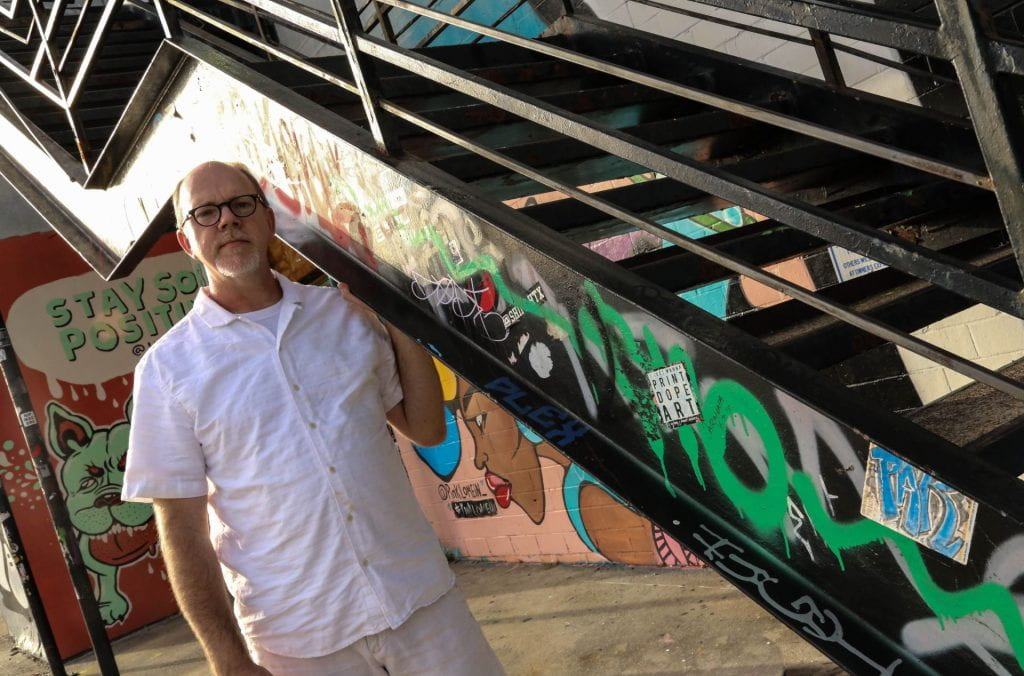
Scott Lunsford is Professor of Writing, Rhetoric & Technical Communication at James Madison University. His current research focuses on the rhetorics of graffiti and other counter-publics in transgressive spaces. He produces this work as video and audio scholarship focused through the lenses of embodied literacies and rhetorics, multimodality, mobility studies, and genre theory.
Image description: Scott Lunsford stands beside a staircase tagged with graffiti, situated in an area popular for murals and street art in Houston, Texas.
Stephanie Springgay and Priya Thomas
Activist Modes of Communication in Curriculum
This presentation/chapter will activate the verb languaging as performative and activist modes of communication in curriculum. Examining a new approach to the performance of language as gestural, bodied, and as sense-making, our presentation will share our theoretical frameworks as they are being put to work in the BIT archive and modeles being created for the Knowledge Platform.
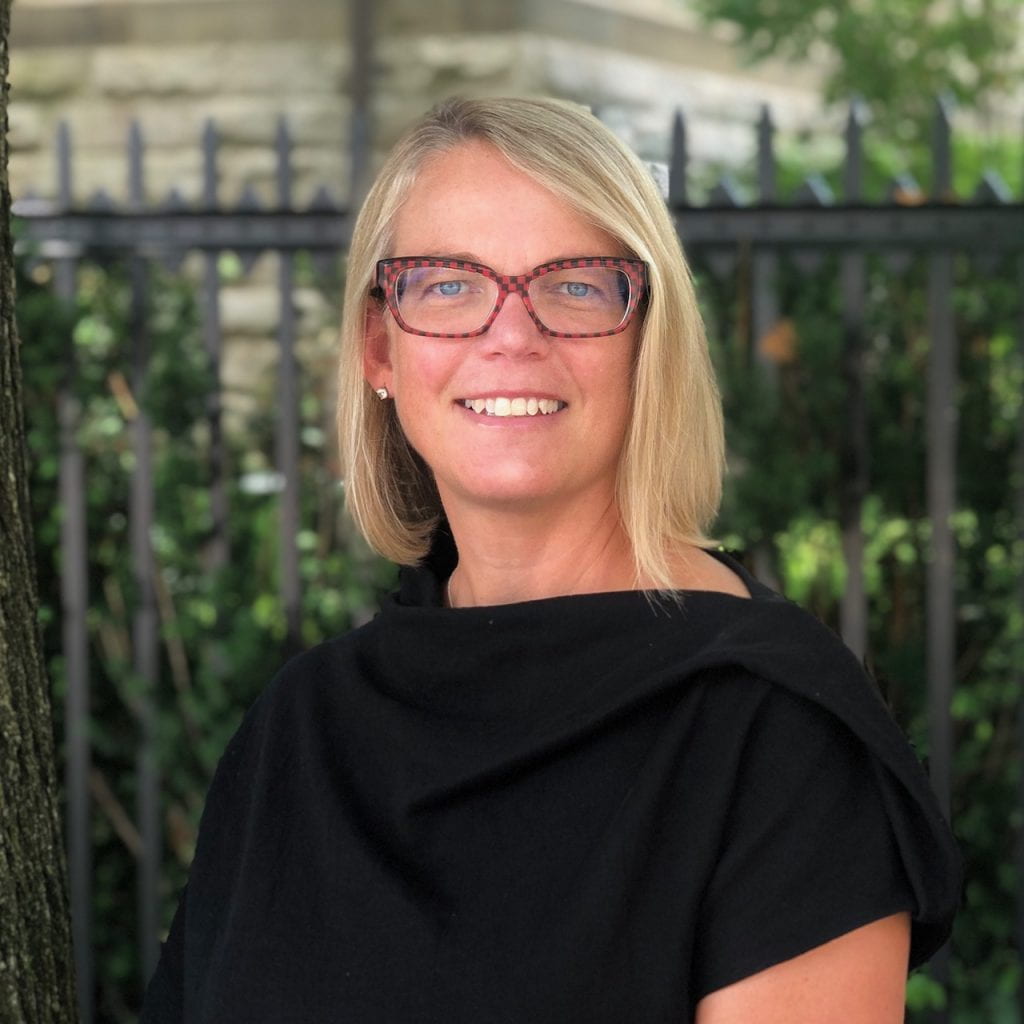
Stephanie Springgay is Director of the School of the Arts and Associate Professor at McMaster University. She is a leading scholar of research-creation with a focus on walking, affect, queer theory, and contemporary art as pedagogy. She directs the SSHRC-funded research-creation project The Pedagogical Impulse which explores the intersections between contemporary art and pedagogy. She directs WalkingLab – an international network of artists and scholars committed to critical approaches to walking methods. Additionally, she is a stream lead on a SSHRC partnership grant Bodies in Translation: Activist Art, Technology, and Access to Life. Other curatorial projects include The Artist’s Soup Kitchen – a 6 week performance project that explore food soveriegnty, queer feminist solidarity, and the communal act of cooking and eating together. She has published widely on contemporary art, curriculum studies, and qualitative research methodologies www.stephaniespringgay.com
Image description: White middle aged woman in black dress, blonde hair, and red and black glasses standing in front of a fence and tree.
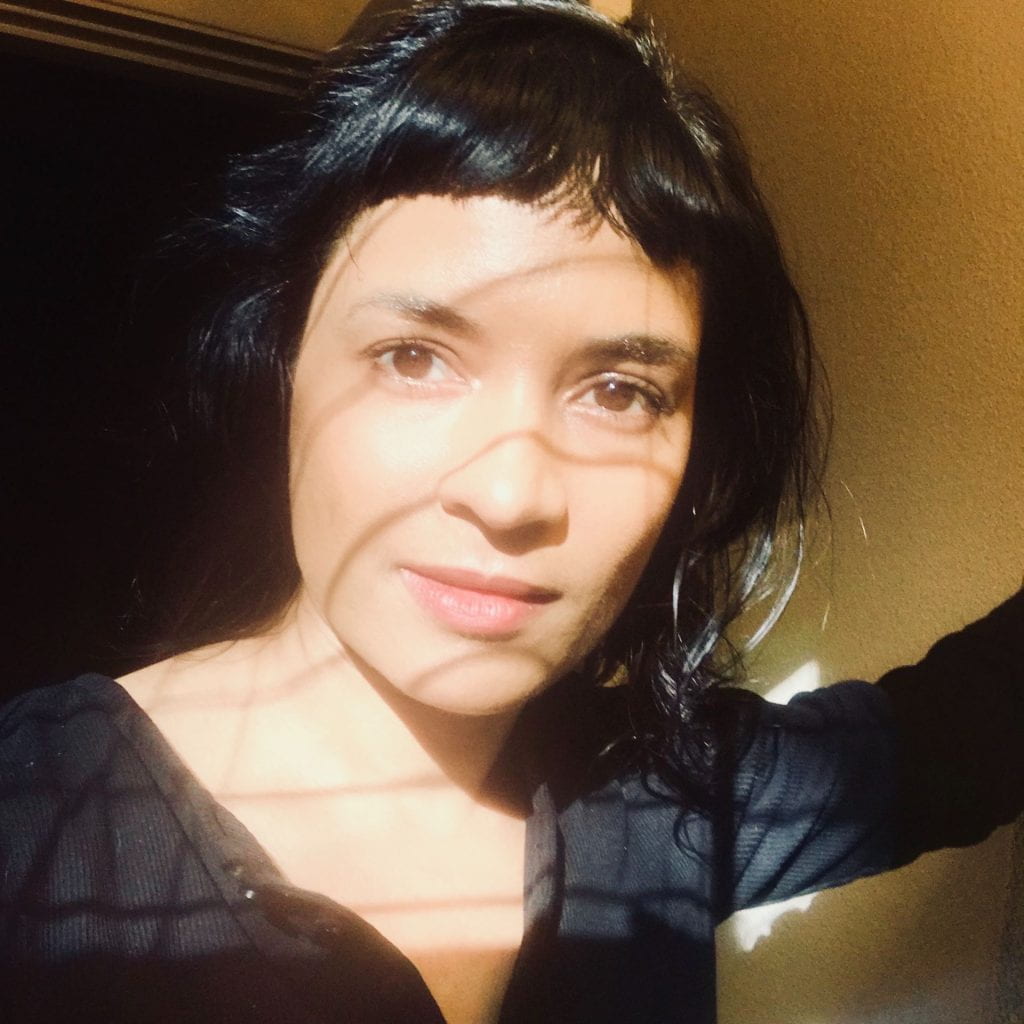
Dr. Priya Thomas is Research Associate Academic, McMaster University, where she serves as curriculum designer with the SSHRC-funded project, Bodies in Translation: Activist Art, Technology, and Access to Life. A dance/theatre historian with a multidisciplinary critical practice, her research/creation straddles dance, performance, theatre, music, digital media, sound art, and community-based projects. Across these domains, she pursues questions around ontology and the human in performance. Her research on the historical configurations of the monster has been recognized through publications in leading, peer-reviewed journals, book chapters, international conferences, and a number of research awards, grants, and fellowships.Until June 2021, she served as a tenure-stream assistant professor at Texas Woman’s University, where she taught across the BA, MA, MFA, and PhD Programs in the Department of Dance. She is Book Reviews Editor for Theatre Research in Canada/Recherches théâtrales au Canada (University of Toronto Press); and Affiliate Research Faculty with the York Centre for Asian Research at York University, where she leads the Mindfulness in Motion Lab, an international research consortium/resource centre dedicated to the study of mindfulness in movement-based modalities. She is currently writing a SSHRC-funded book on the monster in transatlantic contexts of the long nineteenth century.
Image description: Dark-skinned middle aged woman in black shirt, black hair, brown eyes standing in front of a sunny window.
Susan Dion, Carla Rice, and Tanya Senk
Indigenous Students Telling Stories, Theorizing and Being Well
While the alienation and marginalization of Indigenous students from institutions of formal schooling is well documented (Battiste, 1998; Deyhle, 1998; Leroy, 2001; Schissel & Wotherspoon, 2003) there is a growing body of literature that describes how alternative programs designed specifically for Indigenous youth are achieving success. In this paper, we focus on learning from the voices of Indigenous youth who attend publicly funded schools and who participated in the ninshnabek de’bwe win//telling our truths research project. ninshnabek de’bwe win’ brought together Indigenous and non-Indigenous researchers, teachers and students to create and share digital/multimedia stories (short videos) about Indigenous people’s experiences of schooling that could inform settler-educator learning and offer critical insight into what is required to decolonize and indigenize urban schools in Ontario. These youth eloquently articulate their understanding of what they need and want from teachers and school systems. We argue that those of us interested in decolonizing and Indigenizing systems of education ought to be paying much closer attention to students who are not only surviving secondary school but also working from the inside to create change.

Dr. Susan D. Dion (Potawatomi-Lenapé) is the inaugural Associate Vice-President of Indigenous Initiatives and Professor of Education at York University. Dion specializes on issues related to Indigenous matters in education and the role of Indigenous relationships in teacher education. Dion has expertise in both the education of teachers on issues such as reconciliation between Indigenous and non-Indigenous peoples in Canada in relation to the legacy of residential schools in Canada, and the ways these issues should be taught in primary and secondary school classrooms. She is frequently consulted as an expert on Indigenous issues in education in the news media, speaker, and in other community contexts. Dion has collaborated with the Toronto District School Board Indigenous Education Centre on matters such as a First Nations school and a variety of curriculum initiatives. Dion worked with the Ontario Ministry of Education on the “Urban Aboriginal Education Pilot Project.” Dion has particular expertise in collaborative inquiry, a methodology focused on a reflective practice. She has used this methodology in research and practical applications. The “Listening Stone” project focused on collaborative inquiry and First Nation, Métis and Inuit educational initiatives within the Ontario Ministry of Education school boards. Dion’s work with the TDSB and other initiatives on the decolonization of school curriculum has had wide impact on research and practical application of decolonization and indigenization methods within education. Her work with non-Indigenous teachers exploring blockages to incorporating Indigenous-related teaching and issues into the curriculum has also had impact.
Image description: Photo of Susan Dion, in 3/4 profile, smiling and wearing a blue and white striped collared shirt.

Dr. Carla Rice is Professor and Canada Research Chair at the University of Guelph, specializing in disability and embodiment studies and in unconventional and creative research methodologies. In 2012, she founded the Re•Vision: The Centre for Art and Social Justice as an arts-informed research centre with a mandate to foster inclusive communities and social well-being. She is Principal Investigator of Bodies in Translation: Activist Art, Technology and Access to Life, a multi-year, multi-site disability and non-normative arts grant that she co-directs with Dr. Eliza Chandler. She has received awards for advocacy, research, and mentorship has published on embodied difference, non-normative cultures, and practices of accessibility and inclusion. Published books include Gender and Women’s Studies: Critical Terrain (with Marg Hobbs, 2nd Edition, 2018); Becoming Women: The Embodied Self in Image Culture (2014); The Aging/Disability Nexus (with Katie Aubrecht and Christine Kelly, 2020); and Thickening Fat: Fat Bodies, Intersectionality and Social Justice (with May Friedman and Jen Rinaldi, 2020).
Image description: She/they is/are looking at the camera and smiling while wearing necklaces, red lipstick, and a bright red jacket. She/they are white and have long, curly blond hair.
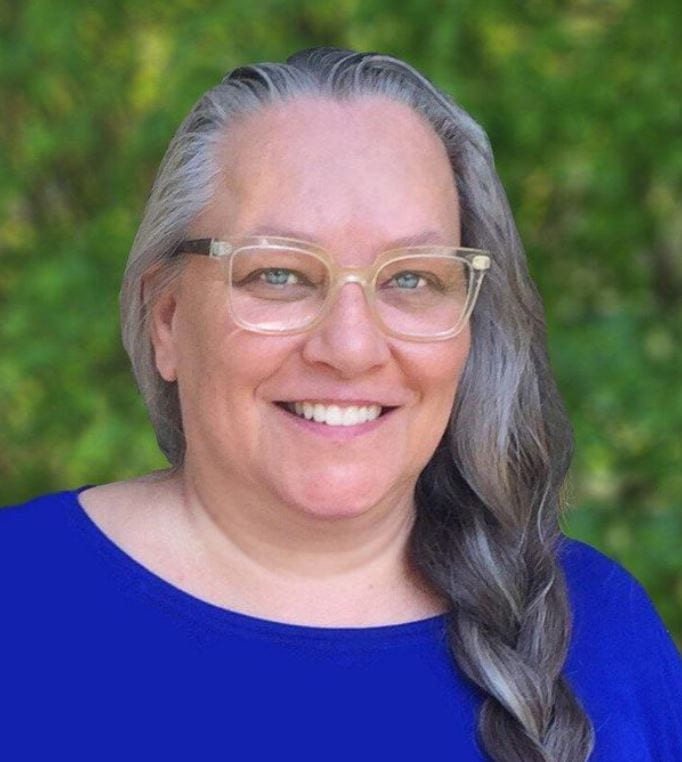
Tanya Senk is the first appointed Indigenous System Superintendent of Indigenous Education for the Toronto District School Board (TDSB) in April 2021. She is a Métis/Cree/Saulteaux, educator, artist, writer, speaker, community leader, and is a proud relation of Louis Riel. As a member of the TDSB for 23 years, Tanya has led system direction, including the strategic planning and vision of the Urban Indigenous Education Centre. She was also the Principal of the Kapapamahchakwew – Wandering Spirit School, K-12 and is currently the Superintendent of the school. She holds a B.F.A. Honours Specialist in Visual Arts, a B.Ed., and a M.Ed. in Indigenous Education. She is also an appointed member of the Aboriginal Affairs Advisory Committee of the City of Toronto and is an Executive Board member on the Toronto Aboriginal Support Services Council. Tanya is currently pursuing her Ph.D. in Indigenous Education at York University.
Image description: A smiling woman with a long grey and white braid of hair resting on her left shoulder. She wears a bright blue shirt and clear-rimmed glasses. The background is blurred green leaves.
Suzanne Cowan
Knot Just Body
Knot Just Body discusses how a choreographed, participatory performance engages with boundaries and thresholds as an experiment in queer entanglements. Utilising techniques of rope tying and the movement practice, Contact Improvisation, the choreographer, Suzanne Cowan, explores participants’ thresholds of vulnerability, risk, and constraint. The performance takes shape through rhizomatic rope structures that create complex interconnected systems of support, sharing weight, experiencing suspension and torsion through the body and a tactile exchange with the environment and participating audience. The choreographic interventions question when a boundary becomes a barrier as something that holds us back and when a threshold represents a type of becoming and a moment of transformation. It experiments with how boundaries and thresholds develop our ability to respond: our response-ability.
Related Link:
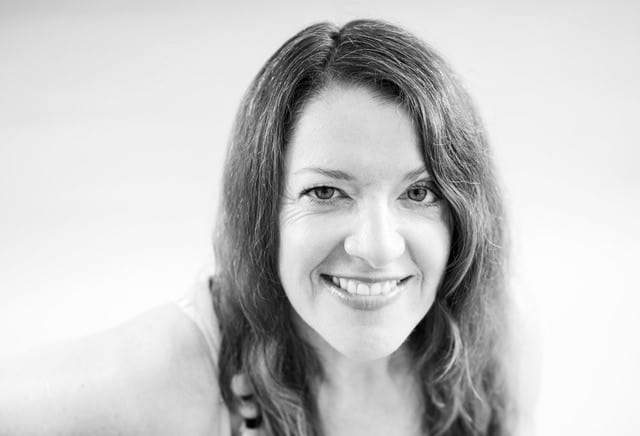
Dr Suzanne Cowan is a choreographer/performer/dance researcher and currently a co-artistic director for Touch Compass Dance Company in New Zealand (Aotearoa). Her most recent projects stem from her post-humanist approach into an expanded corporeality for the disabled artist. After 20 years of performing nationally and internationally she is driven by her desire to break new ground in disability arts and challenge existing philosophies around inclusion and equity. Dr Cowan completed a Practice as Research PhD in Dance Studies at the University of Auckland in 2017. Choreographing Through an Expanded Corporeality brought together her research into posthumanism, feminist new materialism, disability studies, dance and queer theory. It offers an original conception of how an expanded corporeality can both reimagine and construct through performance how we inhabit space and specifically our response to dis/ability, through performance.
Image description: The image is a black and white, head and shoulders shot of a pale skinned woman in her early 50’s with long brown hair with flecks of grey, leaning forward towards the camera smiling. She is wearing a sleeve-less dress with wooden beads on her shoulders. She has an oval face.
Trish Van Katwyk
Arts‐Based Research: Critically Enhancing the Possibilities for Participation, Relationship, Action
As an arts-based researcher, I find myself grappling with (and, at the same time, welcoming with open arms) the critical challenges that arts‐based approaches present. I have incorporated dance, theatre, painting, installation, and multi‐media art methods into investigations about stigma, self‐injury, rural youth experience, Indigenous/non-Indigenous alliance building, pedagogy and social inclusion/belonging. Knowledge was both produced and mobilized in these various research projects. In this paper, I suggest that arts-based research calls upon a research engagement that redefines participation, relationship, and action in such a way as to politicize research and re-conceptualize the ethical possibilities of the research project.
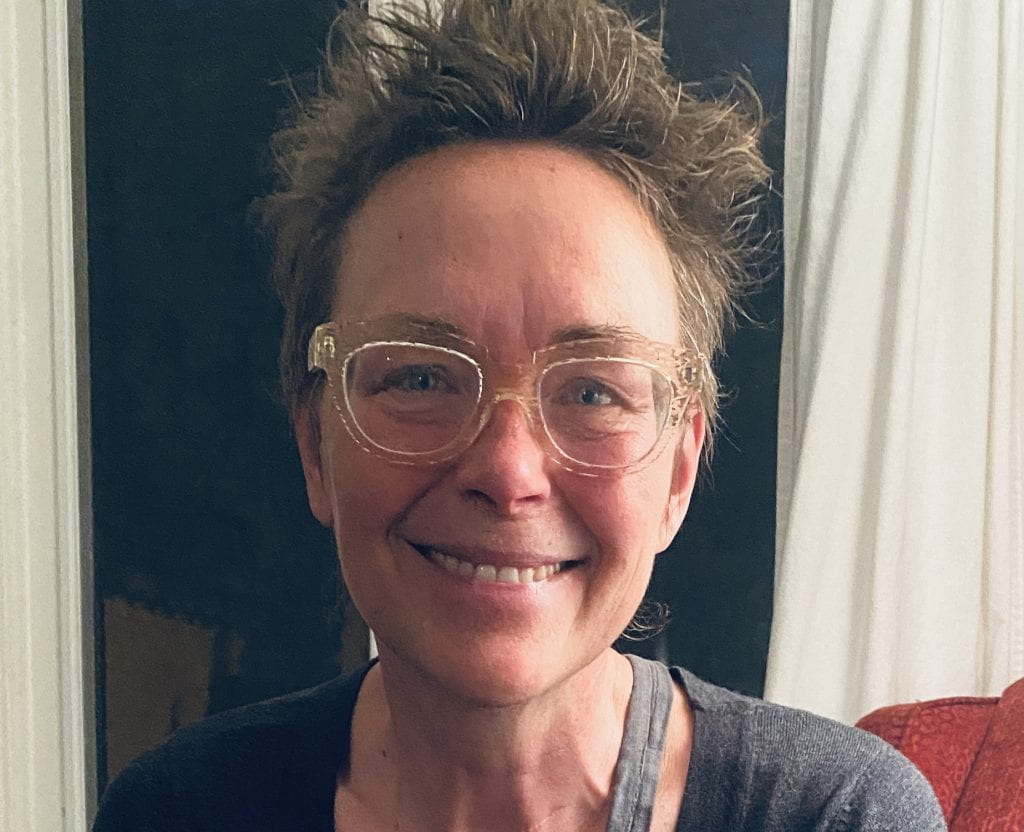
Trish Van Katwyk is an associate professor at the School of Social Work, Renison University College, uWaterloo. “A major focus of my work is exploring the ways in which community immersion and artistic expression can activate healthy communities and many important ways of knowing. I like to support and participate in collaborations that can critique structures that can hold us back and create obstacles to positive, holistic, and collective health. In other words, I like to work with others to make change in the name of social justice. I have engaged in collaborative art creation and in land-based journey in order to extend an understanding of holistic knowing so that meaningful relationships are built. I am now learning about how performance and theatre can also be used to create change and promote health.”
Image description: Trish, a white woman with short brown hair and clear-framed glasses, smiles into the camera and is wearing a grey shirt. Behind on one side is white drapery against a dark background, as well as the corner of the red chair Trish is sitting in.
Xuan Thuy Nguyen and Marnina Gonick
Critical Arts-Based Research in the Context of Social Change: Reflecting on Possibilities for Becoming with Women and Girls with Disabilities in the Global South
This chapter examines how critical art-based research (Denzin, 2008, Finley, 2018; Rice, Chandler, Harrison, Liddiard, & Ferrari, 2015) can be used to engage young women and girls with disabilities in the global South. Critical art-based research is structured on “the notion of possibility, the what might be, of a research tradition that is post-colonial, pluralistic, ethical, and transformative in positive ways” (Finley, 2018, p. 561). This research practice embraces the responsibility of the researcher to engage in political activism by creating conversations for social change through community-engaged and decolonizing methods (Smith, 1999). While feminist disability studies in the global North has employed art-based research to problematize medicalized and pathologized understandings of disability and difference, and thus, opens possibilities for transformation by revisioning what disabled bodies could become (Rice et al., 2015), this approach has been, historically, situated within the global North, and thus, has been disengaged with the politics of disability in the intersection with racialized and female bodies in the global South. We ask: What are ways in which critical arts-based research can engage with decolonizing methodologies to challenge hegemonic discourse on “women and girls with disabilities” that has emerged in the global development agenda (United Nations, 2012, 2016)? What are ways in which arts-based research can engage, challenge, or transform the disability rights movements outside the Western contexts? What are some tensions and challenges of this feminist approach in regard to epistemological and political differences between researchers and activists in the global North and South?
Related links:
- Envisioning Inclusion_TDKRA.pdf
- Engaging girls with disabilities through cellphilming: Reflections on participatory visual research as a means of countering violence in the Global South – Xuan Thuy Nguyen, Marnina Gonick, Tuyen Bui, 2021 – journals.sagepub.com
- Transforming Disability Knowledge, Research and Activism (TRKRA) Policy Brief
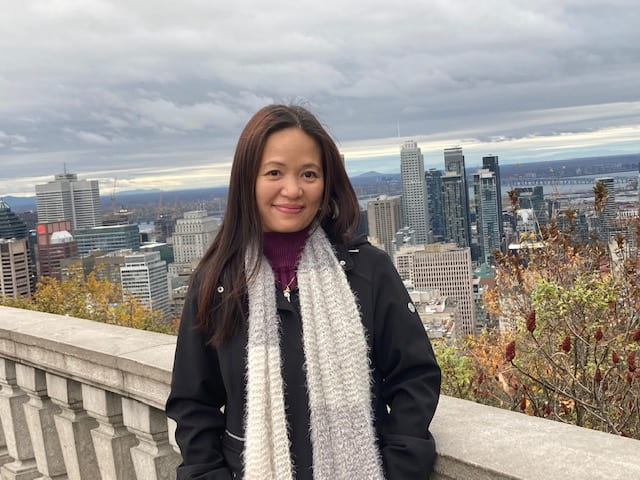
Xuan Thuy Nguyen is an Associate Professor in the Institute of Interdisciplinary Studies and Pauline Jewett Institute of Women’s and Gender Studies at Carleton University in Canada. She is the Project Director of a Partnership Development Project entitled “Learning with and from the global South: Opportunities for engaging girls & young women with disabilities across Southern spaces” (ENGAGE) funded by the Social Sciences and Humanities Research Council of Canada (SSHRC) [2021-2024]. Her work has been published in many peer-review journals such as Disability & Society, Disability and the Global South, Global Studies of Childhood, Foucault Studies, and Girlhood Studies: An Interdisciplinary Journal. She is author of The Journey to Inclusion (2015, Sense/Brill Publishers).
Image description: A close-up image of a female person wearing a black jacket with a white and gray scarf. Behind her is a wide view of the city with high-rise buildings and the sky.

Marnina Gonick is Professor of Education and Women and Gender Studies at Mount St Vincent University, Halifax, Nova Scotia. Her recent articles have been published by journals such as Young: Nordic Youth Studies; Feminist Media Studies; and Girlhood Studies: An Interdisciplinary Journal. She is currently the Canada Fulbright Visiting Research Chair at Dartmouth College, USA.
Site Menu
- Overview
- Event Activities
- Online Platforms
- Partners and Sponsors
- Programme At-A-Glance
- General Access Information
- Access Practices
- Gather Town – Access Guide
- Zoom – Access Guide
- Presenters, Performers, & Moderators – Access Guide
- Access Support Team
- Glossary of Terms
- Keynote Speakers
- Presenters
- Performers
- Restricted Access – Registered Attendees only


